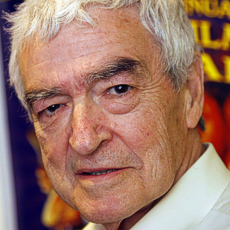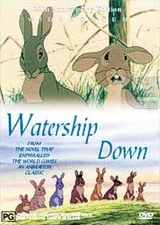As the excellent, groundbreaking and – to an entire generation – highly affecting British animated feature Watership Down is re-released yet again, this time to the prestigious Criterion Collection on Blu-ray, we present an extended version of an interview piece originally conducted to celebrate both the film’s 35th anniversary and the career of its editor Terry Rawlings. Watership Down marked his start as a picture cutter and this interview comes full circle, arriving at a time when he now enjoys a well-earned retirement. This is the life, in films, of Terry Rawlings…
 Being a freelance talent in the movie business is a nomadic experience that can lead down many paths. A man who seems to have traveled most of them is prolific editor Terry Rawlings, who as a sound or picture cutter, has been involved in everything from frothy classic comedies, rock musicals and animation to dramatic epics, groundbreaking science fiction – even a James Bond film – and, naturally, a visit to the Academy Awards to enjoy Oscar nominated glory.
Being a freelance talent in the movie business is a nomadic experience that can lead down many paths. A man who seems to have traveled most of them is prolific editor Terry Rawlings, who as a sound or picture cutter, has been involved in everything from frothy classic comedies, rock musicals and animation to dramatic epics, groundbreaking science fiction – even a James Bond film – and, naturally, a visit to the Academy Awards to enjoy Oscar nominated glory.
Along the way, he’s worked with a host of significant filmmakers, from the avant garde (Ken Russell, Michael Winner) and Hollywood legends (Stanley Donen, Ridley Scott) to the mainstream (Jon Amiel, Joel Schumacher), collaborating on a hugely impressive roster of credits including such landmark films and entertainments as The L-Shaped Room, Bedazzled, Women In Love, Scorpio, Tommy, Alien, Chariots Of Fire, Blade Runner, The Lonely Passion Of Judith Hearne, GoldenEye, US Marshals, Entrapment and The Phantom Of The Opera.
The 35th anniversary of Watership Down, director Martin Rosen’s 1978 animated adaptation of Richard Adams’ novel that marked Terry’s switch from sound to picture editor, provided good reason for me to sit with the man himself and discuss the film. As a friend of my Dad’s from back in the day (Terry assisted in setting up our first VHS recorder!) and now as an editor myself, the discussion quickly lost its interview angle and became much more of an affable, nostalgic conversation about film in general that also offered the chance to reflect on Terry’s considerable career.
We meet in Terry’s luxuriously kitted out home theater – where we joke that his LaserDisc, DVD and Blu-ray collection looks like my own one rearranged – not too far from Elstree Studios, just outside London, where Terry made his mark early and which later played host to some of the biggest movies of all time (including the Star Wars and Indiana Jones trilogies, Who Framed Roger Rabbit, Kick-Ass and World War Z).
After much transcribing of the recordings, coupled with – ironically – a prolonged editing and picture research period, Animated Views is proud to finally present what I hope you will find an engrossing look behind the scenes with not only one of the medium’s most creative practitioners, but a downright lovely human being as well.
— Ben Simon, AnimatedViews.com
Working With Michael Winner, Ken Russell And “Tommy”:
Early Days At Elstree Studios’ Sound Department
Animated Views: Terry, we’re primarily going to talk about Watership Down, but you’ve had such an amazing career that I couldn’t start without speaking to you about some of the other work you’ve been involved in. I was catching up on some of the DVD supplements you’ve recently been contributing to and it really is staggering, the amount of varied work, that you’re now talking about in extras for such films as Alien, Blade Runner and, of course, the previous Deluxe DVD editions of Watership Down…
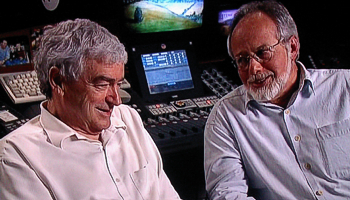 Terry Rawlings: Well that was a dramatic day going to do that interview. I was working at the time, I think it was Phantom Of The Opera I was on, and I went over to where we were going to hold the interview. I can’t remember exactly where it was, but it was in a studio, and I drove to this place, went into this stacked car park, I came down the stairs, and I’m walking down this slope, just to walk across the road to where this building was, and I don’t know what I tripped over on, but I went flat on to my face down on to this concrete! I went to hold myself up, and bashed my head, cut my eye, and I just laid there.
Terry Rawlings: Well that was a dramatic day going to do that interview. I was working at the time, I think it was Phantom Of The Opera I was on, and I went over to where we were going to hold the interview. I can’t remember exactly where it was, but it was in a studio, and I drove to this place, went into this stacked car park, I came down the stairs, and I’m walking down this slope, just to walk across the road to where this building was, and I don’t know what I tripped over on, but I went flat on to my face down on to this concrete! I went to hold myself up, and bashed my head, cut my eye, and I just laid there.
This bloke came running over, said, “we thought you’d died!”, and all I was concerned about is “have I got blood on my shirt!?” – I’m going for this video interview, and that was concerning me more than anything! I was obviously shook up and I went up to this place, they gave me a drink of water and if you look at it, I’m always sitting like this, because of this cut on my eye! God, that was a real shock, though, because I don’t know what I tripped on; I might have just caught my own feet or something, but I just felt myself going… Horrible.
AV: You wouldn’t be able to tell. It’s always funny, the little stories behind things like that – whoever would have thought that was all going on beforehand! But you made it to the interview and that discussion, between you and Watership Down’s director Martin Rosen, has now been included on a couple of discs, even if it hasn’t made the cut for the Criterion edition for some reason. However, before that film you’d already had quite a career on the sound side of filmmaking, doing a lot of your early work at Elstree Studios on frothy films such as The Lady Is A Square, with Frankie Vaughn, Janette Scott and Wilfrid Hyde White among other names, and the music for that film was composed by the famous British band leader Wally Stott, who you would later work with on Watership Down. How and why did you want to get into the business and how did you end up working in sound?
TR: I didn’t exactly start at Elstree, because I got into the film business while I was going with a girl at the time, whose sister’s boyfriend was Gerry Paulson. Gerry Paulson was an editor of commercials at that time, or “filmlets” as they were called then, for Rank Screen Services. So one weekend when we were all together he said, “There’s a job going in the library”, so I said, “Cor, alright…how much are they paying?”, you know, because I think I was earning six pounds a week or something, or three-fifty. He said they’re paying six or nine pounds, or whatever it was, so I though well that’s worth doing. Anyway, I went there and I worked in the library, and then there was a woman, a real staunch union woman who worked in this place, and she sort of said “He can’t work in here because he’s not a union member”, and they put me in an office which I’d been trying to get away from forever! But I liked it, and worked and got myself a union card.
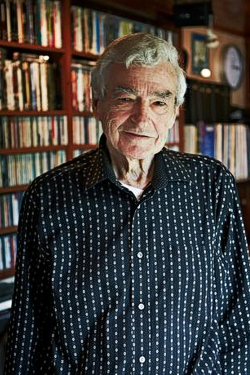 Then I worked in Film House, in Wardour Street, for the same company, dealing with the artwork that came down to the rostrum cameras to be shot for these filmlets – they were the films that you’d have in your local cinema saying “Bert Bloggs, Butchers”, and all those sorts of things that I used to make. So I was the co-ordinator between these and the camera, and then checking the stuff when it came back. I was there for a certain amount of time, and then I moved to their place in Pinewood, where they had a cutting room, which assembled all these things.
Then I worked in Film House, in Wardour Street, for the same company, dealing with the artwork that came down to the rostrum cameras to be shot for these filmlets – they were the films that you’d have in your local cinema saying “Bert Bloggs, Butchers”, and all those sorts of things that I used to make. So I was the co-ordinator between these and the camera, and then checking the stuff when it came back. I was there for a certain amount of time, and then I moved to their place in Pinewood, where they had a cutting room, which assembled all these things.
So I got into the cutting rooms, but I fell out with the bloke who ran the department because…I can’t remember the actual figures…but say at the time the rate for the job was twelve pounds a week, and they were paying me ten-fifty or something, or ten pound ten, whatever it was. And I said “I want the money, I want what I’m due…I mean this is what I’m doing, this is the job, I’m in the union”…
They wouldn’t pay it to start with, and there was an amazing woman with the union in those days called Bessie Bond, this Scottish woman, who fought the causes for all the people who were in it, and she came down and she was a real dragon, and of course she got me the money. They had to pay it because it was a legal requirement, but he said “Fine, alright, I’ll pay you the money. You can now go down into the library and clean all the 16mm films that we have”. There were miles of ’em! I thought I’m not gonna stick this, but I loved the idea of working in the cutting rooms, so I said “Well, I’m leaving”, and I went to the union: “Any jobs going?”, and they sent me down to Shepperton Studios and that’s where I worked on the very first feature film I ever worked on.
I worked as the assistant to the sound editor, and it was called Town On Trial, a John Mills film, and then of course it was only for three or four months because it was the dubbing side of it, and it was all coming to a close. So, I’m now dumped out on the street again and, being very green, not knowing really where to go now. So I went back to the union, and I said I’d finished this job; they said “Well, there’s a trainee’s job going down at ABPC [Associated British Pictures Corporation, now Elstree Studios] in Borehamwood, if you’d like to go down and see them”.
So I did, I went and met these people and they took me up to the cutting rooms, which were run by Charlie Crafford, and put me with this lady called Eva Catchpole, who worked there forever, and then I was there for…I forget how many years I was there…but I got better at what I was doing, I was the assistant on the sound side, then the picture side and so forth, backwards and forwards. And then I had this producer, who I’d worked on a couple of his films…Gordon LT Scott…he was going to produce a film called The Pot Carriers, and I kept saying “Why don’t you give me the job to do the sound? I know what I’m doing now”, and I used to badger him every week! And in the end he said “Alright, alright. But you let me down and you’ll never work in this place again!”, one of those things, and that was my first film with my own credit on it, The Pot Carriers.
AV: In 1962?
TR: Yeah.
AV: So, before that though, Indiscreet, with Cary Grant, and Lady Is A Square were ’58 and ’59?
TR: Oh yeah…that’s when I was doing this “assistant” from one thing to another, so I must have been there about four or five years, working my way around the cutting rooms and learning the job properly. It must have been about five years.
AV: Right.
TR: So I must have been in the cutting rooms at Elstree, well Associated British Pictures, between five and six years, and then I got the break, did The Pot Carriers, and then The Dock Brief.
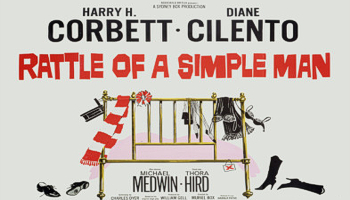 AV: Yes, although The Dock Brief I have seen listed as Trial And Error.
AV: Yes, although The Dock Brief I have seen listed as Trial And Error.
TR: Yeah, that’s what it was in America.
AV: And then The L-Shaped Room and Rattle Of A Simple Man?
TR: Rattle Of A Simple Man, that’s a film I like.
AV: Yeah, it’s a very heavy performance piece. Do you know, I’ve located a copy of it for you…
TR: Have you really!? Oh, terrific!
AV: When I was researching my Elstree book on the Studios, I saw it on the shelf in the archive. I know you kept asking for it to play at our Film Festival events, so I pulled that and I got you Lady Is A Square, but you’ve found Lady Is A Square now?
TR: Yeah, I found Lady Is A Square with the Anna Neagle box set!
AV: Right. Rattle Of A Simple Man has a timecode in the corner, but you know…
TR: Oh, that’s alright…lovely. Now what was the other one? There was another film I worked on as an assistant which I liked, it was called She Didn’t Say No!, and I’ve never heard of it since, it was about a woman who had seven children, not married.
AV: It’s not even in your credits.
TR: No, that was when I was an assistant, so I never get the credit on what I was an assistant on usually.
AV: So there are probably many more early titles that have your hands on them.
TR: Yeah, and then really I started, and got credit. I did those films, The Bargee, Crooks In Cloisters and one thing and another. Then I got a call, because years before I’d worked with Ann Chegwidden before we’d done feature films…I think she’d done Crooks In Cloisters…and we worked for Tim Hewat for Granada Television, and did things like The Pill and ¡Cuba Sí! I mean they were really exciting times doing those films for him because he was one of the great producers I think, and I got a call from him to say, “I’m just going to start World In Action and I would love you to be involved in this. Come and do the complete soundtrack, the music, everything else, and it’s going to be run like a newspaper, so you most probably won’t get the film until Friday afternoon and we’re going to show it Monday evening”. That sort of stuff. It was fantastic, and I thought “Shall I do it?” because I was now getting going, you know, I was doing all these films now. And I thought, “Well, would it be alright if I just do the first series?”, which was six months. So he says “Fine, and then if you want to stay on, fine”.
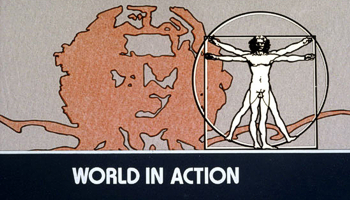 So I did six months, and it was really one of the best things I ever did because it taught you to keep you standards high and work fast! You know, know how to cut corners but not degrade the quality. So that was a wonderful working experience.
So I did six months, and it was really one of the best things I ever did because it taught you to keep you standards high and work fast! You know, know how to cut corners but not degrade the quality. So that was a wonderful working experience.
AV: I did the same kind of thing…I’d just broken into music videos and doing commercials and doing that kind of thing, and then I was offered a long-term contract on a daytime TV show which, it was a studio-based thing but they were looking to put some general interest inserts into it, and they sent a small crew off and it was the same thing. We’d get the footage on a Tuesday morning and they’d say, “Right, Thursday afternoon we want ten or fifteen minutes” and, you know, with me being a stickler as well, I’d make sure all the sound was ramped on all the shots so that nothing jarred and everything, and they really wanted a lot of stuff very quickly, but like you say, you keep you standards up.
TR: And it teaches you to get fast! It really does.
AV: Oh yeah, absolutely, and it was a fantastic time and experience, but I probably stayed longer than I should have. I was at the company, Thames Television, four and a half years, mainly because we’d built up such a family atmosphere on that show, although I did jump around on different shows. But within Thames I got known as being, “Oh, you need that in two days, get Ben in”, and that was good for me because it helped me, obviously, get more jobs and things like that. But I stayed too long there because I was comfortable. I probably should have tried to break out earlier, because I ultimately wanted to get into features at some point.
TR: You’ve picked such a time to try… I mean I talk to the people I’ve worked with for years, and now I’m retired…I mean it’s quite nice being retired, I’ll tell you. It’s not for you yet, of course, but it is nice to think I had one of the best periods in the film business, really, those great years of wonderful films being made. I went through a period for about five or six years with Michael Winner, Karel Reisz, Ken Russell and Jack Clayton, of course. I did these things, and as he was finishing, one of the other ones was starting. It was a fantastic period.
AV: Whenever anyone asks me what kind of period would you want to go back to, it would either be America in the mid/late 1930s, where there was an explosion in Hollywood with all the creativity and creative use of the technology of the time that was coming out, and all the great stuff that was being made there just before the war, or it would be the mid-1970s, probably in England, where just a lot of the stuff I grew up with was being made, there were some fresh and exciting projects, and I think there was a real kind of time of change in filmmaking.
TR: Yeah, I think the ’60s to the mid-80s, it really was a good period, there were some really good films being made.
AV: There was a lot of edge to most things, you had “art house” stuff, but that still worked in the mainstream, which you don’t get as much now; it’s all been pushed away as being “Oh that’s too niche” and it gets labelled “independent”, and now almost everything’s got to be mainstream blockbusters. But during your time, there was stuff like The L-Shaped Room…that was earlier obviously…or the kinds of things Ken Russell was doing, and Michael Winner, and although that was kind of “niche”, that you’d call niche now, it all still tapped into the mainstream, which is quite amazing. You know, there was so much variety at that time.
 TR: That’s right.
TR: That’s right.
AV: I think also it’s because I was growing up as well, seeing all that stuff come out; I was just a little too young for most of it, but seeing a lot and hearing about it through my Dad, or visiting him down at the Studio, just got me tuned into it…you know, I like this, I want to be a part of that! It must have been exciting for you, being in the sound department, where the limited time on each project meant you worked on so many different films in a short space of time.
TR: Yeah, I was mostly in the sound department when I got started, because down there is where I did the mix, the dubbing. I was the dubbing editor.
AV: What led you into sound specifically?
TR: Well I love sound, I always have loved sound. I mean music has been one of my great loves all my life and it was funny because when I first started to picture edit it was really Watership Down that was the first, practically the first thing I did, and then I went from Watership Down to Alien, and the thing is, I remember thinking to myself that I can do what these so-called “editors” are doing, but better. I really felt I would do it better because none of them really thought of it – not “none” of them because there were some great editors at that time – but what they never seemed to consider was the sound. They cut it, and hoped you were going to make the sound sort of work.
I remember one famous editor…I won’t say who he was…I remember I said to him, when I was Chairman of the Film Editor’s Guild for two years and we used to have these discussions about sound editors and film editors, and I said it’s really an unfair balance because a film is really fifty-fifty. You know, the thing is the sound could be cut out, the film could go out silent, look great, but really it wouldn’t be the same as it is with a great soundtrack on it. He said, “We are the artists, and you embellish our art”, or however how he put it. In fact, “You as the sound editors just make our work look better”. And I said, “Fine, you’ve answered my question completely”, you know, that’s your attitude, and that’s why I thought to myself, I can edit these films, and the thing is, at the same time, I will have sound in my mind. But you don’t do things because of it, you do it subconsciously. It’s like anything; you talk to someone about editing, I kept saying I can’t tell you how to edit a film. There’s got to be a natural feel for it, but I can’t say “I cut there because of…” this. Now you can if it’s an action sequence, I cut there because the gun went off, or whatever, but in cutting it’s got to be instinctive. You’ve got to feel the scene.
AV: I always find that if it’s well shot and the movement or performances are doing the right thing, it finds its own way, and you’re just there saying “Oh well it needs to have a cut here”, instinctively as you say.
TR: Well you know when you’re looking at a scene and the thing is the dialogue’s going on, and you see there’s a group of, say three or four people in this scene, and somebody says something, and you know one of them’s going to react to that. You know you’re really going to want to see how it affects the people there. That’s how you cut, really, you’ve got to cut it with how you think people are going to react, who are in the scene. Or put yourself in the scene and be one of the characters, if you want to. Then you know how to edit it.
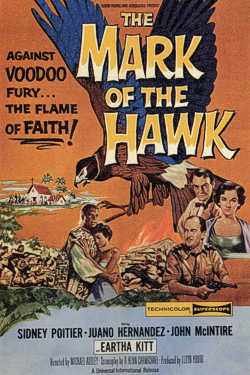 AV: Absolutely. Going back to your sound days, the 1960s was a busy period at Elstree; they had Tony Hancock there, Cliff Richard, Stanley Kubrick and Lolita, Hammer Films moved from Bray to make their base there. Were you involved in any of those films?
AV: Absolutely. Going back to your sound days, the 1960s was a busy period at Elstree; they had Tony Hancock there, Cliff Richard, Stanley Kubrick and Lolita, Hammer Films moved from Bray to make their base there. Were you involved in any of those films?
TR: No, I wasn’t really. Funnily enough, the first film that I was put on when I arrived at Elstree Studios was a film with Sidney Poitier, Eartha Kitt and John McIntire, and it was about the Mau Mau uprising in Africa. I’ve got the tape of it…I found it in America in some junk shop, and it’s in slow speed and it’s the worst quality you’ve ever seen, but I’ve got it somewhere, and that was the very first thing I worked on down there. I think they called it The Mark Of The Hawk over in America, and it was being made for the Presbyterian Church of America. Yeah, that was one of the first things I worked on.
AV: And then, among your other early credits are such landmark films as Bryan Forbes’ The L-Shaped Room and now classic comedies as The Bargee and Crooks In Cloisters. Any memories of those?
TR: Well I was so thrilled to be working on those things. I loved The Bargee because the thing is we spent a lot of time up and down the canals with these barges recording all the sound, I did it with Bill Rowe. Bill and I went up and down there recording all this stuff and then Bill mixed it. Yeah, it was good, those were good days. There were a lot of little films that I worked on as an assistant earlier, like The Small Hotel, with Gordon Harker, and there was a film called Run With The Wind. Can’t tell you who was in that one, but it was a group of little films that they made.
AV: All overlapping?
TR: Yeah, they made these little films and you were just put on to them, which was good. I worked with an editor called Seymour Logie on those three; he came in to do the set, whatever they were.
AV: A film I didn’t recognise in your resume is something called Licensed To Kill, which sounds like it could be a forgotten James Bond spoof?
TR: Oh yeah, that was one of them! Yeah, it was! It was a terrible, terrible film! I’ve got that somewhere as well. What was it called in America?
AV: The Second Best Secret Agent In The Whole Wide World.
TR: That’s right! That’s right! It was dreadful!
AV: It was that bad?
TR: I’ll find it and loan it to you.
AV: It sounds absolutely bonkers. Apparently there was a sequel called Where The Bullets Fly?
TR: Oh yeah, I did that one too!
AV: Any thoughts about them?
TR: No, they were just terrible! They were terrible! They really were.
AV: Quickies.
TR: I’ll try and find them, but I’m in such a mess at the moment with my old stuff, and I need a new handle on the door, or we’ll be stuck in here! Well, it’s a nice place to be stuck! I can phone out, send for food.
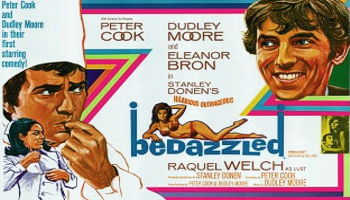 AV: Yeah, exactly. I remember when I was first making a bit of money as a teenager, doing corporate videos and stuff, and I said to my Mother, “Can I covert the attic and put a big screen up there?” – you know, I’ve always had a yearning from my Super 8 days of having a nice home theater, which is finally happening now. And she said “No, you want to go out and get a car”, you know, put my money on my first car and be independent. She said “You don’t want to be stuck at home all the time”, and I replied, “No, but I’d have a lot of fun if I was!”
AV: Yeah, exactly. I remember when I was first making a bit of money as a teenager, doing corporate videos and stuff, and I said to my Mother, “Can I covert the attic and put a big screen up there?” – you know, I’ve always had a yearning from my Super 8 days of having a nice home theater, which is finally happening now. And she said “No, you want to go out and get a car”, you know, put my money on my first car and be independent. She said “You don’t want to be stuck at home all the time”, and I replied, “No, but I’d have a lot of fun if I was!”
One of my favorite films, although I suppose it’s a bit of an oddball picture really, is Stanley Donen’s Bedazzled, the original with Peter Cook and Dudley Moore – “Julie Andrews!” I didn’t know you had been on that; it was on television a little while back, and I noticed your name on there.
TR: Oh yeah, I worked on that. That was good fun. I liked working on that, because it was nice; I worked quite closely with Dudley Moore, because he did the music. And so I had to do the notes and all the rest of it, and we worked together on it and I laid the music up. Yeah, it was good. He was a nice character.
AV: He always seemed to me to be the “nicer” of the two, especially with all the stuff that’s come out after both their deaths.
TR: Yeah, I never really met Cook much. I mean obviously to say hello, but that was about it.
AV: And what was Stanley Donen like? Because obviously he’s a legend.
TR: Well my wife Louise knew him because we did Indiscreet, which he directed, and she worked for his office, she was in the accounts section. That’s where we met and did our courting, in his office up at Wigmore Street. He was good.
AV: That’s quite a story! And then you forged your way onto films directed by a couple of famous British directors throughout the 1970s, Michael Winner (I’ll Never Forget What’s ’Isname, The Games, Lawman, The Nightcomers, Chato’s Land, The Mechanic, Scorpio and The Stone Killer) and Ken Russell (Women In Love, The Music Lovers, The Devils and The Who’s Tommy).
TR: Oh the Michael Winner one, The Sentinel, that was the first one I got a credit on, with Bernard Gribble, because Bernard Gribble was on that film and I was doing the sound. We’d done a few Winner films together but he had to leave, or he was going to go and live in America or something. So he left, so I did the second half of the film, editing wise, so that’s how I got a joint credit and that was my first editing credit. I still did the sound. Then there was Ken Russell, Our Mother’s House was in there somewhere, Isadora…
AV: With Winner and Russell, was that intentional to keep working alternatively on their films, or was it just because you were in the department, or a stroke of luck, or did they ask for you?
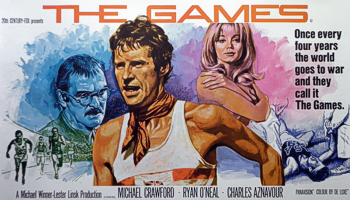 TR: No, I was freelance, and the thing is they would phone up and say they’re going to do a film and would I be available, and it worked out like that. It was just everything all falling into place, it was amazing! I mean it was one of those really sort of “charmed” periods where everybody slotted in.
TR: No, I was freelance, and the thing is they would phone up and say they’re going to do a film and would I be available, and it worked out like that. It was just everything all falling into place, it was amazing! I mean it was one of those really sort of “charmed” periods where everybody slotted in.
Every now and again you’d have to miss one or you were offered something else and you missed out because you couldn’t do it, but the amazing thing is, most of the films that I had to say no to never turned out very well! But there were periods where someone would ring up and say “Would you be free to do so and so?” and you’d try and work it out and if you couldn’t do it, you’d have to say no, and then you find that the film really wasn’t very good! So it was good, a great period, really.
AV: What was that like, working with those two characters?
TR: Oh it was extremes, you see, it was different. I mean Michael Winner really isn’t a good filmmaker, though he did make some good films in his early days, I think. I’ll Never Forget What’s ’Isname, The Jokers; Scorpio was good, The Mechanic was good, you know, I loved those two, I think they were excellent. The Nightcomers was pretty good.
AV: Lawman I always thought too, and The Games as well.
TR: Well The Games, I think, was really ruined by him.
AV: Oh really?
TR: Yeah, because the thing is, he shoots a lot of stuff, but he liked to cut his own films. So doing the sound was fine, you never got bothered by him because he had no patience to do any sound. But he would go, “Er…that’s long enough for that cut”. I mean, he was dreadful, and Bernard Gribble on The Games, particularly with the marathon, which it ends with, we had thousands and thousands of feet of this stuff. Bernard had run through every frame and made notes of every single thing where somebody tripped, somebody did so and so, and so on, and you could have just gone in there and cut it on his notes, and got it good. Winner said “Leave the marathon to me”. And he’d go, “That’s enough of him running”, I mean it was terrible. I mean the film could have been good!
It’s like Won Ton Ton: The Dog Who Saved Hollywood could have been a very funny film, but he cut it to bits. You know, “Let’s make do, get rid of that, and do this”. It was sad that he took it away from Bernard, and Freddie Wilson was another one who worked on his films. But, on the other hand, Ken had Mike Bradsell. Now Mike Bradsell was one of the best editors ever, I think, though he never really, unfortunately, got the big breaks, but you see his work; see Women In Love and The Music Lovers and The Devils. I was with Mike the other day and he said he reckons Savage Messiah was his favorite film that he cut with Ken. And he still worked with Ken up to the end, on his “stable films” or something he calls them, or his “garage films”. Yeah.
 AV: You were on the sound for Tommy, and I’ve read some of the EMI reports where, it’s either Pete Townsend or Robert Stigwood, one of them was having a good complaint about the surround mix, or something like that?
AV: You were on the sound for Tommy, and I’ve read some of the EMI reports where, it’s either Pete Townsend or Robert Stigwood, one of them was having a good complaint about the surround mix, or something like that?
TR: Well what we did, it was the only film ever made in Quintophonic sound. They never used it again and it was all done with the Sansui decoder. We made so much noise, I mean it was the loudest thing ever! And we were told to mix at night because the people in the other theater couldn’t listen to what they were doing, we were making so much noise.
I think they all sort of just argued about getting the levels, they really had to be so big. We moved in all these Dolby machines, we had two desks in there instead of one, with Pete Townsend and so and so, then Bill Rowe and Ray Merrin at the back guiding things around. That was really exciting.
I don’t know about the arguments, but I know they spent a lot of time getting that sound right. And then of course it was run in one theater, up in town, and you had to make normal stereo prints to go to so and so, where it lost a lot of its bite, of course. And because they were magnetic, these prints, the five tracks had to be run so tight on the heads, they were wearing the heads out – every few days they’d need a new head on their projector because it had flattened it off! So it was really not a very good format.
But what we did, we experimented by putting it through a Dolby box encoder, then putting it back through the Sansui, and we could do the five channels optically, because I worked on the very first Dolby Stereo feature film ever, that was Lisztomania. They’d done some television beforehand, they did that detective…what was his name?
AV: Yeah…it was around ’72, or something; Callum.
TR: Callum! That’s it, yeah. Yeah, they experimented on that, but that was Dolby Mono, and then we did the first feature thing with Dolby Stereo, because we worked in the development stage. I would help out occasionally, by supplying some bits and pieces, and we worked with Dr Dolby, who did his experiments down at Elstree Studios.
AV: Ahh…right!
TR: And he used the dubbing theater for all his experiments.
AV: Before he set up in San Francisco?
TR: Yeah, well that was the money.
AV: So, as a result of working with those directors, there were more than a few famous names that featured in those films, apart from Oliver Reed, who seems to have turned up in pretty much most of them! There’s quite a cast here: Orson Welles, Glenda Jackson, Michael Crawford, Ryan O’Neal, Richard Chamberlain, Burt Lancaster, Robert Duvall, Vanessa Redgrave, Marlon Brando, Charles Bronson, Jack Palance, Keenan Wynn… Did you ever get a chance to work directly with them?
TR: I never met Marlon Brando, funny enough, but I’ll always remember Orson Welles. I had to do looping with Orson Welles. We had this session booked with him, he said, “I want to do it on a Saturday, I want to do it in town”, or so and so, so we rush around and get this theater booked, and he’s supposed to be there at nine o’clock in the morning; he turns up at eleven.
He comes in this big black coat, cloak and a hat, and we start recording this stuff and he keeps looking away, and it’s all going out of sync. So I said, “Excuse me Orson but I really think you should go again because it’s not…” He says “It’s Mister Welles to you, young man”, and he said “I’m too tired to do this crap”, or whatever he said, and he turned to Winner and said “I want you to fix this theater for tomorrow”, which is Sunday, “And I will come back in and I will be dust beneath your chariot wheels”. And he stormed out! He went!
 So Winner’s suddenly, “Got to get the theater! Got to get the theater!”, and we get this place organised, everybody’s got to come in on a Sunday to do this stuff, but we get there and we’re waiting again, and there’s a phone call. They used to have a woman in London, this older lady who was like his European secretary…she’d handle his affairs and things…and she phoned up and said, “He won’t be coming in, he’s on a plane to Bulgaria”.
So Winner’s suddenly, “Got to get the theater! Got to get the theater!”, and we get this place organised, everybody’s got to come in on a Sunday to do this stuff, but we get there and we’re waiting again, and there’s a phone call. They used to have a woman in London, this older lady who was like his European secretary…she’d handle his affairs and things…and she phoned up and said, “He won’t be coming in, he’s on a plane to Bulgaria”.
He eventually came back, about…I don’t know, let’s say a month later, so many weeks later, and he came in and came up to me. He said, “Now, I am very sorry the way I treated you last time, I was having a terrible problem with…” – because he was always doing films everywhere, running out of money, doing a bit of this and that – he said “I had a big problem in Bulgaria, I had to go and sort it out. Now”, he said, “I’m very sorry how I treated you last time…what would you like me to do?” And he was brilliant, of course, he just did it all like that! Wonderful.
Though the best was a film I worked on as an assistant, The Story Of David, which doesn’t exist anywhere now. Apparently this film, nobody knows what happened to it, but it was with Jeff Chandler, who died shortly after that, and he was the best looper I’ve ever worked with. He’d come in with a baseball cap, and sat…he loved the sports, he’d have all the papers, reading the papers…and the loop would go up, and he’d be reading the thing and he’d say his line…and it was perfect sync. And perfect performance. He’s obviously listening, reading, and just doing it!
AV: Brilliant. The L-Shaped Room was directed by Bryan Forbes, who also made the Cinderella romance The Slipper And The Rose, with music by the Sherman Brothers and Angela Morley, who later composed Watership Down. I’ve heard you mention the film a few times.
TR: I love that, but I wasn’t part of it.
AV: You weren’t a part of that?
TR: No, I just love the film, though.
AV: So then you went from being a dubbing editor to a sound editor, at least credit wise, on Jack Clayton’s The Great Gatsby, written by Francis Ford Coppola and starring Robert Redford and Mia Farrow. What’s the difference in titles?
TR: Nothing, they’re the same job. It’s exactly the same job. Sound editors they call them now, they used to call them dubbing editors in the past. I got a credit on that film as sound editor and technical advisor, and the reason I got that is because I handled all the music, from before Nelson Riddle came on to do it, and that was great working with him.
AV: Nelson Riddle, another legend.
TR: It was my idea to have What’ll I Do? on the front of the film; I suggested these things to Jack, and then I found a man, Brian Rust, who was quite famous as an absolute expert in dance band music and stuff of the 20s. I used to go and see him and say “Now if we were in 1921, what would be the top ten? Give me like the Top Of The Pops for today”, you know. And he’d go through his books and things and he’d tell me exactly what they would be listening to at the time.
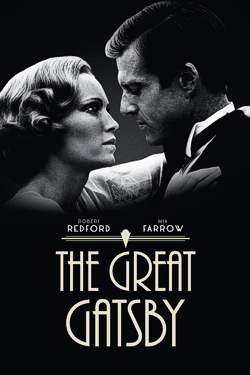 So I sought out all these things and I placed them in the film as they needed them. We obviously couldn’t use them because it would have cost too much money to buy the rights, so then Nelson Riddle came and wrote his own stuff, and he also reworked all these songs in the style of the time, but they were his arrangements.
So I sought out all these things and I placed them in the film as they needed them. We obviously couldn’t use them because it would have cost too much money to buy the rights, so then Nelson Riddle came and wrote his own stuff, and he also reworked all these songs in the style of the time, but they were his arrangements.
AV: Clever.
TR: And it was very nice working with him, he was a charming man. I’ve lost it now, this quarter inch tape I had, but because I did the music, I was the music editor as well. So we went to him in the States and we were at the music sessions, which I’ve still got on tape. All the time we were doing this, in the breaks and lunch time and stuff, I’d be tinkling about on the piano, and I just play by ear, so to speak, but I taught myself the chords of What’ll I Do?. So I could play this What’ll I Do?, his arrangement that he made, and at the very end of the session he came in with his trombone, because he used to play trombone with Tommy Dorsey’s Orchestra, and we did a duet…
AV: Oh wow!
TR: They gave me the tape, and I can not find it anywhere in the house; I mean it was many years ago, it was like 45 years ago or something…but I can’t find it. It must be somewhere, but I don’t know where. And that was great; it’s a pity I haven’t got that.
AV: That’s magic.
TR: It would have been a special thing, yeah.
AV: Jack Clayton directed that, and he also did Disney’s Ray Bradbury adaptation of Something Wicked This Way Comes – I know you weren’t a part of that, but he had a rough time there…
TR: Oh yeah. I think it was because they took it away and edited it themselves and didn’t give him a chance to do what he wanted to do with it. I did The Lonely Passion Of Judith Hearne with him after he’d gone through that. He was a real charming man, and I’ve never seen anybody so hurt, and when we did Great Gatsby it was the same, because that wasn’t accepted very well either. I think the trouble is Gatsby was a film out of its time. We’d just got to that stage where the films were snappy, you know, cut like this and swinging this, swinging that…and this was slow and lyrical and all the rest, beautiful to look at.
AV: Yes, it’s a very cinematic film.
TR: Yes it is. And I really like the film, still. Anyway, we went to the premiere in New York, and just as it started the thing broke down! And they said “we’re going to carry on from where we are”, for all the rest of it. I said “no you’re not!” I’m arguing with the people in this cinema telling them they’re going to go back to the beginning and going to start the film again, because this is the first reel anyway. In the end they did, but it wasn’t well received. We had the most amazing night at the Waldorf-Astoria, where we had something like five hundred thousand white roses sent in especially, and they had…what’s his name…
AV: Redford?
TR: Yeah, but apart from the people that were there they had this orchestra wandering around playing all the themes of the film around you, and a famous dance band playing all night, I mean we were the last to leave! So we all got drunk, just thought to heck with it, we’ll all get drunk and have a great time.
AV: You at least had a great night out of it then!
TR: Yeah!
 AV: Amongst all that, you spent an interesting couple of years working with Ken Russell on Tommy and Listzomania, which we have already spoken about, and then you were back for your next Michael Winner project, an odd attempt at a family film, Won Ton Ton: The Dog Who Saved Hollywood. I spoke to you about this the other day after recently running the DVD release, and wanted to ask you about it here. So what can you tell us about Won Ton Ton? I remember you mentioned your amazing autograph book…
AV: Amongst all that, you spent an interesting couple of years working with Ken Russell on Tommy and Listzomania, which we have already spoken about, and then you were back for your next Michael Winner project, an odd attempt at a family film, Won Ton Ton: The Dog Who Saved Hollywood. I spoke to you about this the other day after recently running the DVD release, and wanted to ask you about it here. So what can you tell us about Won Ton Ton? I remember you mentioned your amazing autograph book…
TR: Oh yeah, I was lucky enough to have to record, loop and re-do all the dialogue with all these famous people! It was like, “You’re going to America next week and you’re going to get a list of these…” – I got this list! – Alice Faye, Yvonne De Carlo…who else?
AV: Phil Silvers, Sterling Holloway, The Ritz Brothers, …
TR: The Ritz Brothers, Dennis Morgan, Walter Pidgeon…you know, all the names, William Demarest, all these people…and so I had this great list. They would arrive, and because they only had about three lines to do, in they came – Yvonne De Carlo came in at 10:15, I asked “Would you sign this? Sign here, sign this” – and she left at 11:15. So, somewhere I have that, I can’t tell you were that is at the moment but I’ve got that. I’ve got all these things but they’re all who knows where!
AV: So your association with Michael Winner got you on that film?
TR: Yeah, it always was the same. Michael would phone up and say “I’m doing a film”. Now what he would do…let’s say in those early days you would be earning, say, £25 a week, something like that, and you thought “the next film I do I’m going to get him to give me at least £28, or something like that”. So, he’d phone up and say “Terrence!” – always like that – “Terrence! I’m starting this film called The Mechanic and I want you to be available on the so and so” – and he’d talk very slowly – “It’s about things, so and so and so on”, and he’d say, “The same price as last time”…whack…putting the phone down!
AV: That was how he kept his costs down!
TR: Yeah, but he was fun to work with, I thought. He was so rude to everybody, I suppose, but I always got on with him, and he never gave me a bad time ever, though he did give people a bad time.
AV: With Won Ton Ton, it’s a bit of an odd film. Was it intended as a family picture? Because he wasn’t well known, obviously, for making those kinds of films.
TR: Yeah I think it was. It was basically Rin Tin Tin.
AV: Right.
TR: That’s what it was, and I just think it’s like all his stuff at that time…it was cut to pieces; he’d got some good material and funny sequences, but then he gets bored and then says “We’ve got to trim it all up, it’s got to be faster”, and they’ve always got to be in ten reels, it’s always got to be 90 minutes, or whatever. It’s got to be that, and that’s how he did it. The worst one ever with him, the only film I ever started to cut for him, was Bullseye, and in the end I had nothing to do with it. And it was terrible that film.
AV: Yeah. Which again, like Won Ton Ton it could have been quite good.
TR: It could have been funny, yeah.
AV: Maybe intentional comedy just isn’t his thing! It seemed with Won Ton Ton in particular that I was watching a family film, but then you’ve got a bit of questionable language in it, and then there’s a couple of scenes where it all goes off into inappropriate places.
TR: Was there swearing in it? I don’t remember.
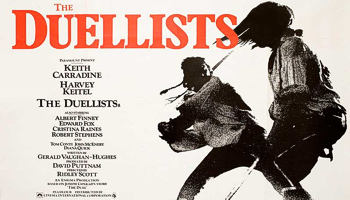 AV: There’s a couple of examples, yes, and that surprised me, actually, because I was watching it as a family film and thought, “Oh, that’s bit of a shock”, and then there’s this subplot where it’s suggested the leading lady has become a lady of the night for five minutes, or something like that, and it just seemed totally out of place in that kind of, what should have been a quite jaunty kind of comedy. What did you think of the whole final result?
AV: There’s a couple of examples, yes, and that surprised me, actually, because I was watching it as a family film and thought, “Oh, that’s bit of a shock”, and then there’s this subplot where it’s suggested the leading lady has become a lady of the night for five minutes, or something like that, and it just seemed totally out of place in that kind of, what should have been a quite jaunty kind of comedy. What did you think of the whole final result?
TR: Well I think it was over cut; I think it had lost all its charm, because it was funny, when you saw the early rushes and things they were good. And I just think it was cut to bits, that’s why.
AV: It wasn’t fun enough for kids, and it wasn’t adult enough for adults…
TR: No, I think it just fell between all the stools, you know. The same as The Games. The Games could have been good. I didn’t think that worked either.
AV: Which brings us to 1977, a big career year for you, it seems, as you worked on The Duellists, meeting Ridley Scott, and you became a picture editor on Winner’s The Sentinel.
TR: Yep, The Duellists was my last film as a sound editor. We had two picture editors: Pam Power, who was doing it first, and then Mike Bradsell joined her I think.
AV: What was that like, jumping from sound – you were already doing the sound on The Sentinel – and then carrying on over to the picture? How did you find the changes in disciplines?
TR: Well I didn’t find it any problem. I never did. I mean I just felt that, even if I say it myself, I felt that I was a natural to it, I felt I could do this. I had the right feeling for the rhythm of the film, and it was never a problem. I never had a bad time editing; I’ve never really been in a state where I thought I don’t know what to do now.
AV: I must say it’s really interesting hearing you speak, as someone who wants to do delve further into this as well, because everything you’re saying is how I feel. I also have a bit of a musical background, and editing is rhythmic; it’s all about the rhythm of the picture.
TR: Of course it is, yes.
AV: When you say you can’t explain why you make a cut here or there…there are many times when somebody has asked me, “Oh, you know, why did you edit this that way”, and you can’t explain it, it just happens, especially if you come from a musical background, or from sound, because I also did a few years of sound mixing in my early twenties before I started picture editing, in London. It’s the same thing, it should just come naturally, really, in a sense. Sorry to break in, but it’s just interesting and inspiring, what you say.
TR: No, that’s alright. No, you can’t explain it.
AV: So you got a co-credit, or a half a credit, on The Sentinel, bringing us then to Watership Down, on which you would become a fully paid up picture editor…
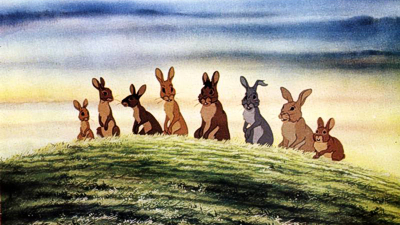
Bright Eyes And Animated Bunnies:
Editing “Watership Down”
AV: Even at an early age I had a great appetite for animated films – I remember having Peter Pan on a loop after you helped us set up the VHS at home – but Watership Down was a film I especially remember being eager to see ever since my Dad brought me down to Elstree Studios all those years ago, when I was knee-high to a rabbit, as it were, and I first met you when you were, I think, mixing the film. Since animation has quite a lengthy production time, you must have been involved quite early in the process?
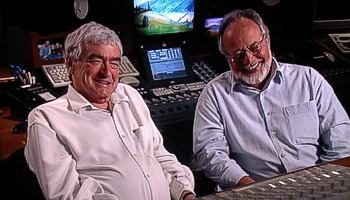 TR: Yes, but it didn’t start that way for me as an editor. I got a call from Martin Rosen because he was the producer of Women In Love.
TR: Yes, but it didn’t start that way for me as an editor. I got a call from Martin Rosen because he was the producer of Women In Love.
AV: Ahh, of course he was.
TR: And he said, “I’d love you to do the sound on this animation film I’m going to do”. He said it was going to be “quite interesting…how you devise to do it I don’t know but it’s going to be a challenge”. So I thought oh that’ll be interesting, but you really had to do something else in between because it was two years as they would do all the line tests, and they you go away and they do some other stuff and all the rest of it.
So it went on like that and Ron…somebody…was going to edit it. I’d never heard of him before, nice chap. He was absolutely into steam engines, steam power…he loved all that stuff. And he was somewhere, swimming, and was taken bad and drowned. So Martin asked me if I would take over. It was still the early stages, so the thing wasn’t as if he had really done a lot of it, but he’d done a lot of preparation.
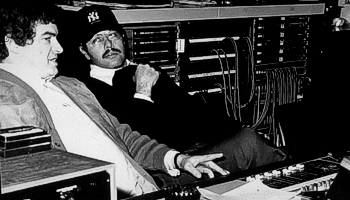 So I took over, and they draw…you must know because you know all about animation…they do all the line testing, do the whole film in line test, so then you can cut all these line tests together, look at the sequences and say whether it would be better if this one moved quicker or, you know, it takes too long to get round this tree.
So I took over, and they draw…you must know because you know all about animation…they do all the line testing, do the whole film in line test, so then you can cut all these line tests together, look at the sequences and say whether it would be better if this one moved quicker or, you know, it takes too long to get round this tree.
So they say “Where do you want me to put the tree?” – I used to love all that – they’d say “Where do you want the tree? You can have it the other side of the house or around the back”. So while we go all through that I think I left them to do The Awakening, and then came back to Watership Down.
AV: The Awakening is listed as 1980, which is even after Alien, so I don’t know if that got cut and then left on a shelf?
TR: No it couldn’t have been that then, but the funny, interesting thing about Watership Down is they bought an old tanning factory to do it in, for the whole setup.
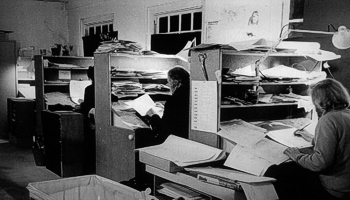 It had the animators at the top, and then the sort of the inbetween artists, ink and paint, and all that sort of business, all the way down. It was about five floors, and the cutting room was in the basement of course! We were in the basement, and it was situated in…Warren Street! I thought that was great, for Watership Down – Warren Street!
It had the animators at the top, and then the sort of the inbetween artists, ink and paint, and all that sort of business, all the way down. It was about five floors, and the cutting room was in the basement of course! We were in the basement, and it was situated in…Warren Street! I thought that was great, for Watership Down – Warren Street!
AV: Yes, I love that. So it must have been the sound you were working on when I saw some footage at Elstree?
TR: Yeah, we were down here doing the sound.
AV: Right, because I just remember a vivid memory of seeing a bit with a stream in there, and I remember that shot being in the film, from the main titles.
TR: That’s the front, which is so beautiful to look at.
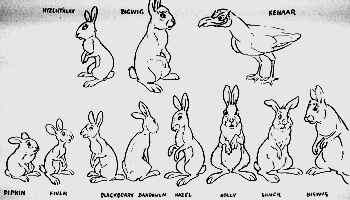 AV: It looked great, and I remember really wanting to see this film, I thought I must see this film when it comes out, though I eventually saw it on VHS, I think first. Those titles really show off the watercolor backgrounds to great effect, nicely beginning at Watership Down itself and pulling back and back to where the rabbits are at the start of the film, essentially showing the journey that they are about to embark upon in reverse. And then, before that, there’s that completely alternative, sharply styled prologue that establishes the differences in animation even more.
AV: It looked great, and I remember really wanting to see this film, I thought I must see this film when it comes out, though I eventually saw it on VHS, I think first. Those titles really show off the watercolor backgrounds to great effect, nicely beginning at Watership Down itself and pulling back and back to where the rabbits are at the start of the film, essentially showing the journey that they are about to embark upon in reverse. And then, before that, there’s that completely alternative, sharply styled prologue that establishes the differences in animation even more.
TR: Yes, it starts with that sort of Pagan ritual, and that was an interesting thing because the man who did that…
AV: John Hubley?
TR: John Hubley was fired.
 AV: And then he died [in 1977, Hubley having art directed Disney’s earliest features before the studio strike of 1942], which was quite unfortunate.
AV: And then he died [in 1977, Hubley having art directed Disney’s earliest features before the studio strike of 1942], which was quite unfortunate.
TR: I know…it was very sad. I remember going to his apartment flat right at the beginning when we were going to do this film together…
AV: So you were on it as far back as that abandoned version?
TR: I was on it from the beginning. And we went to the house where Dizzy Gillespie came, because he was going to do some music for it, and there was a bloke called Bill Russo, because I’m a great Stan Kenton fan; Bill Russo was an arranger and a trombone player with the Kenton orchestra, I used to meet all these people, and Dizzy – Louise spent ages speaking with Dizzy Gillespie – and they were all there! At John Hubley’s. And then, of course he did the opening sequence, but then his ideas began to clash with Martin Rosen, and Martin said “It’s not going to be what my dream is”. So he’s got to go, and he took over himself as producer-director.
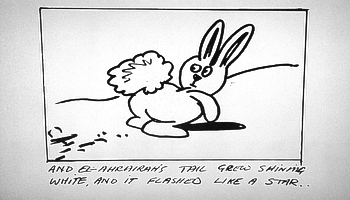 AV: I also understand that Hubley worked on it for a year and then only turned in about five minutes or so.
AV: I also understand that Hubley worked on it for a year and then only turned in about five minutes or so.
TR: Well yeah, that was the thing, we were never going to finish it. It was one of those things that was never going to be finished.
AV: As you say, after that version got abandoned, Martin Rosen was not only the producer but then he stepped in as director as well. What was that period like, watching things from the sidelines and seeing all that upheaval?
TR: Well we didn’t really…I mean, you really don’t see that, you know, it’s not always in the open. That’s the stuff that takes place in the office…”if this isn’t speeded up or if this isn’t done it’s pointless us working together”. All that sort of dialogue would have gone on away from us, because they were tinkering along on doing bits and pieces. But then it came down that we were going to stand down for a while, and Martin was going to take over and it was going to be his concept. Which I think works very well. And they kept the Hubley piece on the front.
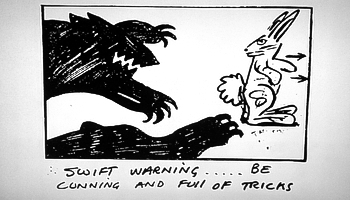 AV: The opening, which is brilliant; it works fantastically.
AV: The opening, which is brilliant; it works fantastically.
TR: Yes it is. But you couldn’t have the film like that. People couldn’t take all of that.
AV: No, not ninety minutes of that highly stylised approach…because it’s quite Aboriginal and intentionally primitive.
TR: That’s right, I think Aboriginal’s right, like the cave paintings and stuff.
AV: Yeah. So after Hubley, you were editing the picture by then and having to deal with the animation side of things, which is naturally very different to live-action because you’re dealing with either line tests or completed shots as opposed to having the coverage to play with. What did you find the main difference between cutting live-action and animation was, and how did you approach this?
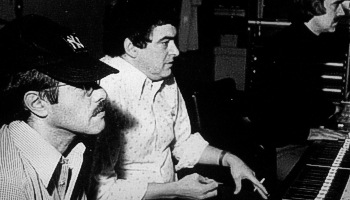 TR: Well you do the line tests and edit all the line tests together, so you’ve got a film now that’s just like all pencil drawings. And you can see whether it plays, you can see whether this sequence is too slow, and you can discuss it with the animating director and you say, like I just said about “I can’t get this to work because the background’s too complicated”.
TR: Well you do the line tests and edit all the line tests together, so you’ve got a film now that’s just like all pencil drawings. And you can see whether it plays, you can see whether this sequence is too slow, and you can discuss it with the animating director and you say, like I just said about “I can’t get this to work because the background’s too complicated”.
So they say “We can adjust anything you like; we can move the trees, we can do the sun, the building needn’t be there it can be over there”, which I thought was amazing, like that, where they virtually do that now with digital, and everything else in CGI. Anyway, so then you do that and then they go away and start drawing them for real, and you then match things up to how you did it in the first place, but you find that you get this shot that is shorter than the line test was, or a shot which is quicker, so you then adjust it as you go along.
AV: I have two versions of the Watership Down soundtrack: an official release and…a not so official release that contains some extra material. I probably shouldn’t have told you that since you actually produced the soundtrack album, as noted on the cover. What was involved with that side of things and how on Earth did you end up becoming a record producer!?
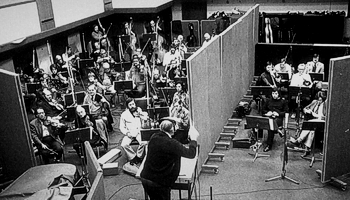 TR: Well, Martin came to me all thrilled and said “I’ve decided to use Malcolm Williamson, Master of the Queen’s Music, to do the score for the film”, and I thought “Well, I don’t know if that’s going to work”. Personally, I didn’t think it would, but it was his choice. I said to him at the time, “Oh, you’re taking a risk”. He said, “No it’ll be great; great for the film”, you know, Master of the Queen’s Music and all that stuff. And we had a Royal Command Performance with the film as well, where we met Prince Charles, I think.
TR: Well, Martin came to me all thrilled and said “I’ve decided to use Malcolm Williamson, Master of the Queen’s Music, to do the score for the film”, and I thought “Well, I don’t know if that’s going to work”. Personally, I didn’t think it would, but it was his choice. I said to him at the time, “Oh, you’re taking a risk”. He said, “No it’ll be great; great for the film”, you know, Master of the Queen’s Music and all that stuff. And we had a Royal Command Performance with the film as well, where we met Prince Charles, I think.
Anyway, dissolve forward…the music session is taking place on the Monday; we’ve hired virtually the whole of the London Symphony Orchestra for a week, and Marcus Dodds is going to conduct. And I’m now going over to CTS to meet John Richards, who I know, to just make sure that everything is organised for the Monday. So I go over there, and I’m meeting with John and saying we’re going to be here and doing so and so, and it’s all going smoothly when the phone rings, and it’s Martin on the phone. He says, “Are you sitting down?” He said, “Malcolm Williamson has written one piece”.
AV: I can imagine the shock, because he was on it for about a year as well wasn’t he?
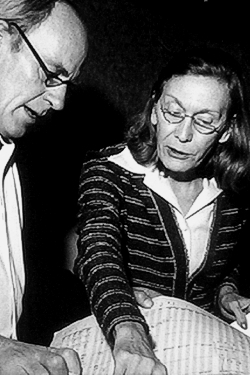 TR: And he’d only sketched out one other thing. He had a virtual nervous breakdown and left the country. A bit like Orson Welles! He left the country…what are we going to do? What are we going to do!? I thought I’d say “I told you so!” – no I didn’t say that, I thought I could say that! Angela Morley had been attached to do arrangements, and I was a great fan of Angela Morley anyway, and as Wally Stott, you know [previously known as band leader on the 1950s Peter Sellers Goon Shows, Stott swapped to become Morley in the 1970s and continued as an arranger of choice for John Williams, among others, on many of his “golden period” soundtracks].
TR: And he’d only sketched out one other thing. He had a virtual nervous breakdown and left the country. A bit like Orson Welles! He left the country…what are we going to do? What are we going to do!? I thought I’d say “I told you so!” – no I didn’t say that, I thought I could say that! Angela Morley had been attached to do arrangements, and I was a great fan of Angela Morley anyway, and as Wally Stott, you know [previously known as band leader on the 1950s Peter Sellers Goon Shows, Stott swapped to become Morley in the 1970s and continued as an arranger of choice for John Williams, among others, on many of his “golden period” soundtracks].
AV: Who, I was going to say, started on Lady Is A Square.
TR: I just think she was amazing. So I said “I tell you what I’d like to suggest to you…that you give the score to Angela Morley to do. She knows the music, what he’s been trying to achieve, and he hasn’t done it, and I think it would be great if she does it”. He said, “Oh, I don’t know about that, you know”, but Marcus Dodds agreed with me, and so they got Angela to do it. Now they’ve got to get rid of the London Symphony Orchestra that’s been booked for a week at all that cost! Well Marcus Dodds knew someone who was looking for an orchestra, so it all fell into place and they managed to sell of the orchestra…
AV: And that was Jeff Wayne, doing his War Of The Worlds!
TR: Yeah, they booked off the orchestra to him, and we re-conformed in, I think, a couple of months later or something, and in a month or less, Angela wrote the whole score, which I think is wonderful.
AV: Yes, it’s a beautiful and haunting score. Absolutely terrific.
TR: And because I was so closely involved with her, Martin gave me the job to produce the album on his behalf, which was really wonderful.
 So we produced that…you write little extra tops and tails for the pieces and one thing and another…and I said to CBS, who was releasing, “We should release Bright Eyes as a single”. And they wouldn’t do it, they said it’s not really commercial enough, not like the performance in the film, because it was a different kind of arrangement.
So we produced that…you write little extra tops and tails for the pieces and one thing and another…and I said to CBS, who was releasing, “We should release Bright Eyes as a single”. And they wouldn’t do it, they said it’s not really commercial enough, not like the performance in the film, because it was a different kind of arrangement.
So then they got Mike Batt to do this arrangement of Bright Eyes, which they then agreed to release, and they put Keehar’s Theme, which I produced, on the back. Which was wonderful – it bought my car! It was great! That was great.
AV: I was going to ask about that – Watership Down is celebrated for the Bright Eyes song, which I think is wonderful and really, before the big Disney ballads in the 1980s and ’90s, pioneered this idea of using a signature theme from an animated film to promote the picture. Did you work closely with Mike Batt on the creation of that arrangement, or with the singer, Art Garfunkel, on the recording?
TR: No, I didn’t. I worked on the earlier film version with Garfunkel, we worked all night with him singing it. But there were three other songs, or two other songs in that film, which never got put in.
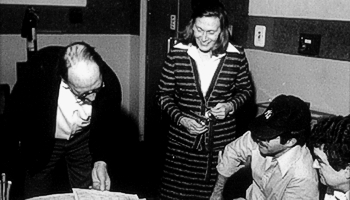 I can find these songs eventually because I’ve got them places, not to put my finger on, but I’ve got those because I did a copy; Martin hadn’t got a copy of these songs, and I, being as I just grab everything and collect it like you do, it comes in very handy occasionally. You say “Oh look, I’ve got this here, this is the music of so and so”. It’s like when they did Legend, they wanted to redo a complete version of Legend. Have you seen the full version, the new long one?
I can find these songs eventually because I’ve got them places, not to put my finger on, but I’ve got those because I did a copy; Martin hadn’t got a copy of these songs, and I, being as I just grab everything and collect it like you do, it comes in very handy occasionally. You say “Oh look, I’ve got this here, this is the music of so and so”. It’s like when they did Legend, they wanted to redo a complete version of Legend. Have you seen the full version, the new long one?
AV: With the restored Jerry Goldsmith score instead of Tangerine Dream?
TR: Tangerine Dream was only released in America to start with, but the release that we put out here [in the UK] was a cut down version of the original film anyway. And then we worked together with these people for a long, long time finding bits and pieces from the vaults, of things that were taken out, whatever. And also, one of the things, there was a thing in it called The Fairy Dance where the Fairies wear him out, they start making him dance all the time, which was cut out, basically because the music didn’t work, the Goldsmith music didn’t work, though I think the score is amazing, and it was left out.
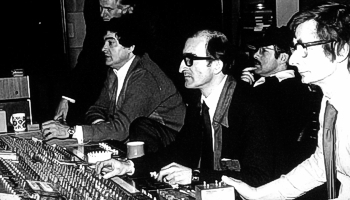 They said, “Well no-one can find this so we’ll just leave it”, and I said, “Well look, hang on a minute. I have got the complete soundtrack on cassette of the original version we finished”. You know, as we finished the dub, as we’re doing the reels, I’m getting them copied onto a cassette. So I had this and I said “I’ve got the complete Fairy Dance that no-one can find anymore”. No-one could find the picture so I said, “Why don’t you put it in as stills?”, and so they did on the extras disc they put it in there, which is handy. Have you seen that?
They said, “Well no-one can find this so we’ll just leave it”, and I said, “Well look, hang on a minute. I have got the complete soundtrack on cassette of the original version we finished”. You know, as we finished the dub, as we’re doing the reels, I’m getting them copied onto a cassette. So I had this and I said “I’ve got the complete Fairy Dance that no-one can find anymore”. No-one could find the picture so I said, “Why don’t you put it in as stills?”, and so they did on the extras disc they put it in there, which is handy. Have you seen that?
AV: Yeah, I’ve seen that, the two-disc edition.
TR: You must have the same disc.
AV: It’s the one with the fold-out packaging isn’t it?
TR: Oh yeah, like a transparent cover.
 AV: Yeah, that’s the one. I wanted to ask one thing about Bright Eyes though, that I read somewhere that Garfunkel wasn’t actually a fan of the song as I understand it?
AV: Yeah, that’s the one. I wanted to ask one thing about Bright Eyes though, that I read somewhere that Garfunkel wasn’t actually a fan of the song as I understand it?
TR: I didn’t know that. I know he just did endless, endless takes, he was never happy with what he was doing.
AV: Which was ironic because then the legendary UK radio DJ Terry Wogan helped it get to number one and it became a phenomenon!
TR: Oh he certainly did, he played it all the time, didn’t he!? He was amazing!
AV: Staying with the soundtrack, Watership Down features some very notable names among the voice cast, including John Hurt (as Hazel), Richard Briers (as Fiver), Ralph Richardson, Roy Kinnear, Denholm Elliot, Zero Mostel, Nigel Hawthorn, Joss Ackland and Michael Hordern as the Narrator. Since you were already involved on the sound side, how much were you involved in the voice recordings, and what was that like, because the voices are recorded first, before the animation begins?
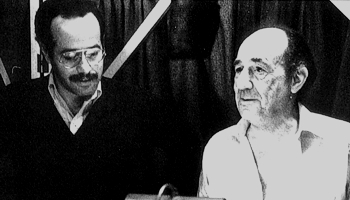 TR: The voices were recorded first, then they animated to those. Then when I got the whole film cut, we re-did them all again.
TR: The voices were recorded first, then they animated to those. Then when I got the whole film cut, we re-did them all again.
AV: Right. That’s unusual for animation.
TR: It is, but the reason we did them again was because they now could see the character, they could see who they were playing, and they can see how they interact with each other, which was better. So that’s the reason why it was done again.
AV: Were they recorded separately, like most animation films, or did you have groups in?
TR: I think they had groups in to start with. I mean I can’t remember all the fine details, but I think they had them in like a radio play, for which they could animate to, because that means they could interact with one another. But then when you saw it all, the performances weren’t as good as you would have liked so then you could do them again.
AV: Looping the loop, so to speak. And for Zero Mostel [perhaps best known for his roles in A Funny Thing Happened On The Way To The Forum and Mel Brooks’ The Producers], this was his last film.
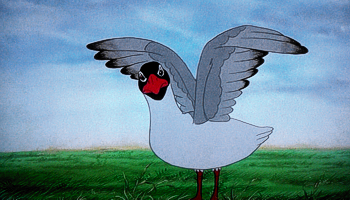 TR: Keehar! “Big water!”
TR: Keehar! “Big water!”
AV: Yes! But although he often plays for the comic value in his character Kehaar the seagull, for him it’s actually quite a restrained performance. Did you get to work with him?
TR: Well, I’ve got to say I didn’t work with him because I’m pretty sure they did his recording in America and then brought it back, because Martin, as an American, it was easy for him just to be in and out. So I’m sure they did his recording in America. I don’t know whether I’m right about that, but I never actually met Zero Mostel, no.
AV: Ah, that’s a shame.
TR: I know it is, yeah, because I was a great fan of his.
AV: The Producers…
TR: “Cardboard belt!”
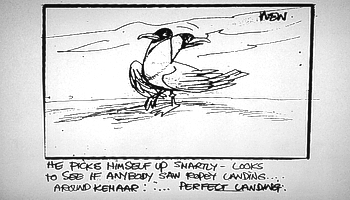 AV: A Funny Thing Happened On The Way To The Forum as well. I think Watership Down, which was poignantly his last film credit, was also the only animated role he performed, but it was the first animated production for a lot of the crew, and the first major British animation feature in a long while, since Animal Farm in the 1950s and Yellow Submarine a decade later. Then there hadn’t been one, big animated feature for about ten years or so. Were you aware of that importance at the time?
AV: A Funny Thing Happened On The Way To The Forum as well. I think Watership Down, which was poignantly his last film credit, was also the only animated role he performed, but it was the first animated production for a lot of the crew, and the first major British animation feature in a long while, since Animal Farm in the 1950s and Yellow Submarine a decade later. Then there hadn’t been one, big animated feature for about ten years or so. Were you aware of that importance at the time?
TR: Not really, it was just another film! I mean, I didn’t realise…I don’t think half the time you realise what you’re working on. Like you didn’t realise what a phenomenal film Alien was going to be. You thought this is exciting, this is terrific, you know, and very frightening, but so it’s another film. Just another film isn’t it?
AV: Since many of the crew were new to animation, I think it actually seems that this helped the creation of the film, to me. Without knowing the boundaries and limitations, they weren’t there, in a sense, to be broken. I’ve heard that Martin Rosen didn’t know what he could and couldn’t do, so he was almost able to just direct the film as if it were live-action. Would you agree with that, about the way it was made? That it wasn’t “an animated film”?
TR: It felt like a normal film, and you really believed the rabbits were alive.
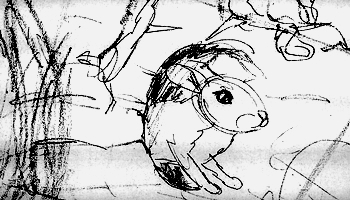 AV: Oh absolutely, even though it was animation, the realism was everything. Nowadays – although I am a fan of such things when they’re done well, like Pixar’s WALL-E or Up – a film like Watership Down would be made with computer generated bunnies, as I believe is the case for an upcoming new version for television.
AV: Oh absolutely, even though it was animation, the realism was everything. Nowadays – although I am a fan of such things when they’re done well, like Pixar’s WALL-E or Up – a film like Watership Down would be made with computer generated bunnies, as I believe is the case for an upcoming new version for television.
TR: Yes it would, and then the mouth movements would be absolutely perfect, and all the rest of it, but it would have lost something, I think, as brilliant as those things are because some of them are so outstanding, you think they’re real people you’re looking at.
AV: And real locations. Have you seen WALL-E? Absolutely stunning; the editing, the cinematography…they actually got Roger Deakins in as a cinematographer on it, so they designed their shots and he came in and said “You need to light it this way or that way”, and on the edit side, I they had Ben Burtt…
TR: Oh Ben Burtt! He did the sound, obviously, because he’s a sound man.
AV: I think he pulled a Terry Rawlings and did the editing on it as well as the sound – actually, he provided the sounds for WALL-E’s voice too – and it’s just a perfect amalgamation. The whole opening is basically pantomime, and it’s Burtt’s details in the sound and editing that is a great, subtle support to creating who the personality of WALL-E is, as well as the stunning animation artists, of course! But when it’s done well, it’s done really well like that.
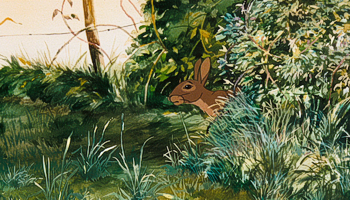 The craft has come on amazingly even since WALL-E, but too many of the lower budget CG films are quite terrible visually, and I just hope that this new Watership Down for TV is going to be able to have the budget to do it properly. You can’t have bad CG animation for something like that: it has to either be realistic or stylistic, like the hand drawn animation of the original film, which provides a delicate fantasy element to the story.
The craft has come on amazingly even since WALL-E, but too many of the lower budget CG films are quite terrible visually, and I just hope that this new Watership Down for TV is going to be able to have the budget to do it properly. You can’t have bad CG animation for something like that: it has to either be realistic or stylistic, like the hand drawn animation of the original film, which provides a delicate fantasy element to the story.
TR: But when you look at the opening sequence of Watership Down, and it’s travelling back, and later on when they’ve got that sort of 3D over the hills and things, I mean it’s marvellous for the period it was done in.
AV: Oh absolutely, and I think a lot of the film’s success is from the tone, obviously from Richard Adams’ original novel, and like many of the best Disney films, with which any traditionally animated film is inevitably going to be compared with – and I’m thinking mostly about Bambi here – it doesn’t shy away from the facts of death.
TR: Yes, like at the end, when they sort of leave their bodies.
AV: Yeah, and it’s so nicely and slowly done through the animation and warm voices.
TR: And it makes you realise that it’s not all terrible, dying.
 AV: There’s a real level of maturity and spirituality throughout the film, for instance most clearly with the Black Rabbit of Frith, that grounds it tremendously, making it as much about reality as it is a fantasy, wouldn’t you say?
AV: There’s a real level of maturity and spirituality throughout the film, for instance most clearly with the Black Rabbit of Frith, that grounds it tremendously, making it as much about reality as it is a fantasy, wouldn’t you say?
TR: Yes, I think it is…you believe these are living things instead of just drawings, and you get so involved with them. So at the end when they’re old and they’ve got to go, you know, the Black Rabbit comes to collect them, it all makes sense and it’s not frightening.
AV: Because although he represents this unknown aspect, he makes it sound extremely inviting.
TR: It’s his voice.
AV: Joss Ackland.
TR: Great voice. Every time I hear him on the radio I say, “the Black Rabbit”. I always think of him as the Black Rabbit.
AV: But this isn’t to say it’s a “dark” film. Watership Down is peppered with lots of very sly humor and, even if the overall mood is quite sombre for the most part, there are lots of bright spots. It’s not all doom and gloom, which it often wrongly gets remembered for.
TR: Well it’s also an adventure isn’t it? It’s their journey, to a new life. The frightening part is when you’ve got the digging up at the beginning when they’ve got to leave and he says “I’ve got this vision”, you know, and you see all these animated trees being crushed.
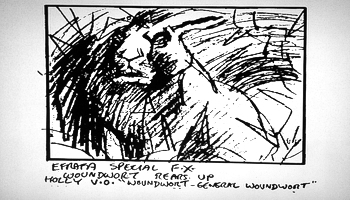 AV: And all the blood seeps across the field. I think it’s moments like those, like Fiver’s visions, that help it stand up and outweigh the fact that the animation, understandably from a young crew, isn’t always as smooth as it might be on a bigger budget studio picture. But the story’s level of maturity and addressing the audience directly, regardless of age, washes any kind of technical limitations away.
AV: And all the blood seeps across the field. I think it’s moments like those, like Fiver’s visions, that help it stand up and outweigh the fact that the animation, understandably from a young crew, isn’t always as smooth as it might be on a bigger budget studio picture. But the story’s level of maturity and addressing the audience directly, regardless of age, washes any kind of technical limitations away.
I actually don’t have a problem with anything in the film anyway…I think the animation is pretty excellent throughout, but it all works because of the strength of the story and the tone of the characters. Like you said, you get drawn in, you think they’re real, and by the end of it you’re thinking “Oh I don’t want Hazel to die”!
TR: That’s right, that’s right!
AV: General Woundwort makes a great effect as well, because he’s one of the most intimidating screen villains. Given that animation, rightly or wrongly, is usually served up to kids, he’s a big part of why Watership Down has something of a reputation; I mean he’s probably scarier, really, than Darth Vader!
TR: I suppose it does get a bit nasty, the attack on the burrow at the end. When you’ve got them going for the throat, and the blood coming out and all this stuff. But it’s good over evil.
AV: Exactly, and I guess that was possible to make undiluted because there was no supervising studio, it was an independent film.
TR: Nepenthe Productions.
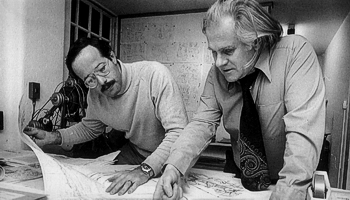 AV: And made under some quite crazy conditions sometimes, it seems! When was it actually completed, because I’ve heard that Martin Rosen had a very tough time trying to find a distributor once it was done, he had to pay out quite a bit for some private screenings before CIC [Cinema International Corporation, the original Paramount/Universal partnership] took the plunge.
AV: And made under some quite crazy conditions sometimes, it seems! When was it actually completed, because I’ve heard that Martin Rosen had a very tough time trying to find a distributor once it was done, he had to pay out quite a bit for some private screenings before CIC [Cinema International Corporation, the original Paramount/Universal partnership] took the plunge.
TR: That wouldn’t surprise me. I mean I don’t know all those details because he did that in America I think.
AV: Right. I remember that he had to organise his own screenings in Leicester Square over here in London a couple of times.
TR: Yeah he most probably did, but next I was on Alien, so the thing is you’d be off on something else. I knew he had a problem getting distribution to start with…and now it’s been through three or four different companies releasing it.
AV: Now Watership Down is genuinely one of my most favorite films to have gripped and moved me as a child. It also might have had something to do with 1978 in general, because another one of my favorites, Superman: The Movie, also came out the same year. I can plug into either of these films and be transported right back to that point in time – kind of like my Rosebud moment, if you will – put either of them on and I’m five again. But, being that young, I don’t remember the general reaction to the film at the time, although I naturally know now how it’s grown in stature over time as what seems to be a well-regarded piece. It was a milestone film, but do you think it still doesn’t quite get the full recognition it deserves…?
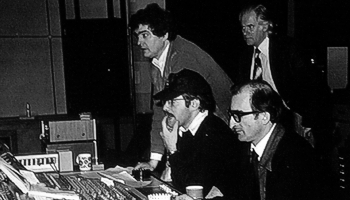 TR: I haven’t met anybody that didn’t like it though. You know, they may have their reservations but everybody’s thoroughly enjoyed it when they’ve seen it. I think Terry Wogan helped it a lot, too, by pushing the song like he did, because then people want to find out more about where did that come from, and for a while it was a perennial wasn’t it? It used to come back every year, they used to show it, around Easter time I suppose.
TR: I haven’t met anybody that didn’t like it though. You know, they may have their reservations but everybody’s thoroughly enjoyed it when they’ve seen it. I think Terry Wogan helped it a lot, too, by pushing the song like he did, because then people want to find out more about where did that come from, and for a while it was a perennial wasn’t it? It used to come back every year, they used to show it, around Easter time I suppose.
AV: What with all the rabbits!
TR: I suppose it would be Easter, yeah.
AV: I understand Martin Rosen needed a bit of coaxing to get Bright Eyes included in the film itself; he wasn’t a fan of having what he thought was going to be a “pop song” before you found the final arrangement.
TR: That’s why we got rid of the other songs too, because there was a very nice song called Losing Your Way In The Rain. Garfunkel did two songs, and Barbara Dickson did two. There were four songs, as far as I can remember, which I wish I could find…I’ll have a quick look in a minute, I can’t think where I can find them though…sorry!
AV: That’s alright! It’s interesting, though, because I never thought of Watership Down being that kind of animated musical film. Bright Eyes comes over at such a perfectly placed time in the film that, while it is so soft and reflective, it just hits you like this wham! moment emotionally. And it works precisely because it’s the single song cue, coming around two thirds through, where you just need to take a breather from what’s going on.
TR: And I love that arrangement, you see, I love that. It’s so much better than the pop version.
 AV: I can’t tell you how many times, when I’m watching Watership Down, I pause and I go back and watch it again, and watch it again. Because of the way it weaves in from the score, and then comes back out, goes back into the song and then comes back out again, it’s so entwined; it doesn’t feel like a song to me, it just feels part of the score, especially with the vocals.
AV: I can’t tell you how many times, when I’m watching Watership Down, I pause and I go back and watch it again, and watch it again. Because of the way it weaves in from the score, and then comes back out, goes back into the song and then comes back out again, it’s so entwined; it doesn’t feel like a song to me, it just feels part of the score, especially with the vocals.
It doesn’t matter that it’s an American voice singing, or that it’s not Joss Ackland, because the vocal is mixed with this ethereal, distant quality that provides another subtext, as if it’s the Black Rabbit calling. But learning there were other songs proposed really surprises me, because I don’t think it would have made Bright Eyes as special a moment, or would have been the same kind of film.
TR: No. It’s hard to remember all these things now, after so many years, but you do remember what you felt at the time. I really loved working on it, I remember, because I liked Martin very much.
AV: Do you remember spending a night on the real Watership Down recording the atmospheric sounds?
TR: I did that with Hugh Strain. Yeah we went down there…where did you hear that from?
AV: I think it’s mentioned by Martin on one of the DVDs that came out in Australia.
TR: Oh really? It’s all over the place! I’ve got three or four myself now, but it’s endless. It’s endless!
 AV: What was that like going out on the Down itself?
AV: What was that like going out on the Down itself?
TR: Oh it was great! We went down there and we stayed with this man, the cameraman on Tarka The Otter, who trained the otter, he was a naturalist photographer, and we stayed at his house, Hugh Strain and I – Hugh was the sound mixer. And then we got up at like three o’clock in the morning and went up to Watership Down and we just sat there and recorded the dawn chorus. Then we found the little railway line that runs by and recorded some of the trains going by there, and got some terrific atmospheres which I used in the picture.
AV: And then back at Elstree you came up with a nifty way to create the Foley effects…
TR: With my fingers.
AV: Yes, and what else did you use for that?
TR: Well, I was thinking to myself, how are we going to do this sound, because you can’t do it with your feet, they’re too heavy. So we got these tables, with all these different trays in them, one with earth, one with gravel, one with some bushes, one with some leaves, and all these different textures, and then myself and these two girls, who did the footsteps – the footstep girls were now the hand girls – and we’d sit there and watch the screen and we’d just do it with our fingers. You know, run through the bushes and this sort of stuff.
AV: It’s so lifelike.
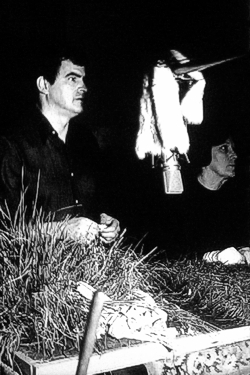 TR: Yeah, it’s good because you can get a very gentle feel, you know when they go like this or that, and they jump. And we had some water to do for when the raft goes across the river, and it was good. We took a long time working out what we were going to do, and then, it was all built up so we could sit down through the whole session. I’m going to say this again, and you’re going to say “he can never find anything”…somewhere I’ve got some stills they took at the time, those little proof sheets, of them doing it. So if I find those…if I come across any of this stuff I’ll let you see it.
TR: Yeah, it’s good because you can get a very gentle feel, you know when they go like this or that, and they jump. And we had some water to do for when the raft goes across the river, and it was good. We took a long time working out what we were going to do, and then, it was all built up so we could sit down through the whole session. I’m going to say this again, and you’re going to say “he can never find anything”…somewhere I’ve got some stills they took at the time, those little proof sheets, of them doing it. So if I find those…if I come across any of this stuff I’ll let you see it.
AV: Oh, fantastic. When did you know that you had something special?
TR: Well, I don’t know. You think everything you’re working on is special until it’s finished, and you think, “oh”. I mean the one I really thought was special, and it did prove to be, was Chariots Of Fire. I never thought they were going to like it in America, that’s the thing, and I was so surprised when they liked Chariots Of Fire. I just thought it turned out very well, I think it turned out better than we expected, and then we had the Royal Command Performance, which was nice, and the only other one we had a Royal Command Performance for was Slipstream, which wasn’t so special. What a load of rubbish that film was!
AV: Yeah, we’ll pass over that one.
TR: Oh, no…it could have been wonderful! But the director really didn’t know what he was doing!
AV: We’ll get to that one in a little while, but back to Watership Down and, you actually might not be too aware of this, but how did you feel the animation community reacted to the film, because it was essentially a bunch of live-action people coming in, essentially making a live-action film in animation, which broke away from what was the norm at that time. Because there was another film…I don’t know if you know The Secret Of NIMH?
TR: I’ve heard of it.
AV: That came out in ’82 with, you’ll be pleased to know, a Jerry Goldsmith score…
TR: I may not have always got on with him, but I always admired his work.
 AV: It’s a very lyrical score, actually, very different to a lot of his more bombastic stuff. We’ll talk about Jerry in a bit, but these two films are often linked by writers trying to find comparisons and make a point about animation at the time. There are a few similarities; there’s a vague animal testing background, it’s about rats that escape from an animal testing facility, and it’s based on another book, by Robert C. O’Brien. The film is a bit cuter and Disneyfied – it was made by a group of ex-Disney artists out to make their own name – compared to the book, which holds onto the trials the animals are subjected to in the testing unit with a firmer grip, but they are quite similar films, with the same drawing style.
AV: It’s a very lyrical score, actually, very different to a lot of his more bombastic stuff. We’ll talk about Jerry in a bit, but these two films are often linked by writers trying to find comparisons and make a point about animation at the time. There are a few similarities; there’s a vague animal testing background, it’s about rats that escape from an animal testing facility, and it’s based on another book, by Robert C. O’Brien. The film is a bit cuter and Disneyfied – it was made by a group of ex-Disney artists out to make their own name – compared to the book, which holds onto the trials the animals are subjected to in the testing unit with a firmer grip, but they are quite similar films, with the same drawing style.
I would argue that the success of Watership Down, a good few years before NIMH, brought the animated medium a little bit of depth and maturity that had been missing in the mainstream for a while, and helped get a few more films out there that might not have otherwise been made.
TR: It may well have done. But Martin did The Plague Dogs, didn’t he, after that, and it was never successful.
AV: Although that was a very complicated story for anyone to bring to the screen. That was another Richard Adams book, wasn’t it, with Martin re-teaming with two of the voice cast, John Hurt and Nigel Hawthorn, but as opposed to being animated in London, that film was produced in San Francisco. Were you ever asked to be involved in that follow-up project, did you not warm to the subject matter, or was it because you’d moved on to other things that you were not involved?
TR: San Francisco, yeah. I was asked to do it, but I couldn’t get away. I was on whatever I was doing the year it was being made. It must have been Blade Runner.
AV: Yeah, Blade Runner was ’82.
TR: The reason is I was signed up to do Blade Runner, and Martin came up and said, “Would you like to come to San Francisco and do Plague Dogs?” Well I said I couldn’t, but my friend Russ Hill, who was in America and who did work on it, he had an apartment flat in West Knoll Drive in West Hollywood. I needed a place to stay for Blade Runner, so I took over his life, so to speak – he went to San Francisco, he left his flat, which I paid the bills on; he left his car, which I paid the bills on; took over his phone, took over his life, and he went to San Francisco and did Plague Dogs. I did Blade Runner there, and then when it finished I went home and he came back.
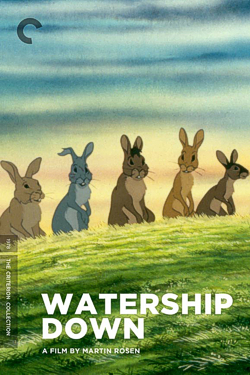 AV: That worked out nice!
AV: That worked out nice!
TR: Yeah!
AV: And now, over thirty-five years on, they still bring Watership Down out again every few years. The Deluxe Edition DVD from Warners was a nice release – they did a good job on it with the featurettes and that notorious interview of yours – as was a Blu-ray issue in the UK. Now, especially with its inclusion in the Criterion Collection of all things, it feels like the film is finally receiving suitable recognition, as also evidenced in its being something of a cultural touchstone, evoked in references as far and wide as the Wallace & Gromit film The Curse Of The Were-Rabbit, and turning up in Donnie Darko.
TR: I have got Donnie Darko up there.
AV: If you have the Director’s Cut, I haven’t seen it yet, but apparently they’re watching Watership Down in it and there’s a bit of a scene based around it.
TR: Oh really?
AV: So how do you feel about the cultural impact, of Watership Down, the way it’s kind of seeped into the consciousness and has started to inspire other work?
TR: Well I think it happens on certain films, doesn’t it? I mean, that’s why I look back at my career and think I’ve really worked on some very influential films. You know, Alien is like a cult movie, and Blade Runner definitely is a cult movie, and as you say, Watership Down is obviously becoming that way now…they wouldn’t be putting money into releasing a new disc if they didn’t think it had an audience for it. I just think they drift up to the top if they’ve got something to say. Usually that’s what happens, or you get these films which I really enjoyed working on, like F/X: Murder By Illusion, I loved working on that film, but that you never see anymore, but it’s a good film.
AV: Oh, that’s a very nifty thriller for sure, but the real success there was on home video [Kino have announced a Blu-ray release for June 2015], where it did enough business to get a sequel made, which didn’t really capture the original spirit, but there was a time when F/X was playing on television all the time.
 TR: Well that’s like another one, The Musketeer, which went through a period where it was on every other day! That could have been a lot better than it was, but you see certain films, they will never become like your Aliens or your Blade Runners, they will never quite make that situation, I don’t think.
TR: Well that’s like another one, The Musketeer, which went through a period where it was on every other day! That could have been a lot better than it was, but you see certain films, they will never become like your Aliens or your Blade Runners, they will never quite make that situation, I don’t think.
AV: It’s true what you say about how the response to a film can go either way, because Watership Down, which has always had support, and has now become that kind of cult film, and then Plague Dogs, which I know you weren’t involved in, but it’s a similar kind of film, absolutely died completely, although I think that was also because it was cut to bits by the distributor.
I remember there being a fight over the cut of that: the original came in at over 100 minutes, and it finally got released at around 80 in America, or something like that. I’ve got a transfer of the longer cut, and in Australia again they managed to put it out, ironically enough from Martin Rosen’s own print, which was unfortunately pretty scratchy and beaten up. I’d love to combine those sources and attempt a restoration appropriate to the qualities of the film, because the longer version makes so much more sense, obviously.
TR: They usually do! The original versions are always the best. It’s only some idiot in distribution, or a producer that didn’t personally like something, that’s the reason it gets changed.
 AV: In the late 1990s/early 2000s, Watership Down made a return to screens in the form of a television series adaptation. Despite some moderately decent animation, a heck of a cast that included film voices John Hurt (now as General Woundwort), Richard Briers (now Captain Broom), music from Mike Batt and even Richard Adams in the episode writing credits, it couldn’t capture the spirit of the book because it was designed to appeal to a younger kids and daytime television audience. Were you involved in any of the three seasons, or did you see any of that?
AV: In the late 1990s/early 2000s, Watership Down made a return to screens in the form of a television series adaptation. Despite some moderately decent animation, a heck of a cast that included film voices John Hurt (now as General Woundwort), Richard Briers (now Captain Broom), music from Mike Batt and even Richard Adams in the episode writing credits, it couldn’t capture the spirit of the book because it was designed to appeal to a younger kids and daytime television audience. Were you involved in any of the three seasons, or did you see any of that?
TR: No, not at all. I don’t think I’ve ever seen them.
AV: I can’t honestly say it approaches any of the qualities in the film; it’s too simplified and, although they have the extra length to include more material from the book, it wanders off into various tangents rather than sticking focused on the rabbits’ journey. I believe they did use some of the cut songs intended for the film in the first season though, such as Thank-You, Stars, and Garfunkel came back to record When You’re Losing Your Way In The Rain. Inevitably, the opening titles used Bright Eyes as its theme tune, which Mike Batt redid as a kind of boy band pop song, which was pretty terrible.
TR: I don’t think I’ve ever heard it. Was Martin involved?
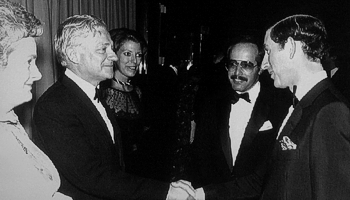 AV: I think he had an executive producer credit, at least on the first series, but I think mostly it all came from Richard Adams and whoever owned the remake rights at the time. I’m truly hoping that the new TV version is more faithful, because the cartoon series was this odd, quasi-adaptation, not really its own thing because it was tied too much to the original film.
AV: I think he had an executive producer credit, at least on the first series, but I think mostly it all came from Richard Adams and whoever owned the remake rights at the time. I’m truly hoping that the new TV version is more faithful, because the cartoon series was this odd, quasi-adaptation, not really its own thing because it was tied too much to the original film.
Once you include Bright Eyes so prominently, you’re inviting comparisons, to which the cartoon show can’t stand up, although I understand why they used it from a brand and marketing aspect, as the song undeniably remains the breakout memory of Watership Down for many; it became its own thing in its own right.
TR: Yes, it did.
AV: How do you feel now when you hear Bright Eyes playing if you’re out and about? Does it take you back?
TR: Oh yeah, whenever you hear that song it takes you back to that film, but the only one you ever hear now is Garfunkel’s pop version, which is a shame because I think the original version that was in the film is far more sort of poignant and what the film is all about, you know, what the lyrics mean, which is a shame, but it always takes me back to the original, hearing that.
AV: Yes, poignant is a good word there, which is reflective of the film as a whole; although Fiver’s premonition of the rabbits’ doom at the beginning is fairly graphic, Watership Down is overall a positive experience, I think, and at its heart it is essentially a quest story, there’s a little bit of the Promised Land in there, and hints of redemption between Hazel and the Black Rabbit…lots of layered themes for an animated film, which naturally derive from Richard Adams. Had you been aware of him before the film came about, or did you read the book while it was being made?
 TR: No, I never read the book of the film that I’m working on because it’s not going to be the same, and the thing is I’m working to the script and what I get everyday. But we’ve got the book, signed by Richard Adams, that he gave me, which Louise has read.
TR: No, I never read the book of the film that I’m working on because it’s not going to be the same, and the thing is I’m working to the script and what I get everyday. But we’ve got the book, signed by Richard Adams, that he gave me, which Louise has read.
AV: So the film is the thing, to paraphrase the bard.
TR: Of course it is. I mean, it’s like an analogy of making a film; the person writes the book, or the script if it’s an original, a script that is a blueprint, like a building. You’re making a building. You get the blueprint, which tells you exactly what you’re going to do with it. Then you get the cast and the crew and what have you, and you build this building, but it’s not finished yet, it’s just “up”. And then the director and the editor go through and decorate, and re-adjust, and make the film, because it’s only “made” at the end. You can understand the comparisons because you’re an editor and you’re building your own place!
AV: Yes…during the construction of our house there have been numerous times when some panelling or dressing has “fixed” a building issue. But that’s what I like about the process and why I’ve always been attracted to editing. Someone can shoot a waste of film, but a good editor can make it at least bearable, and on the flipside, of course, if you’re not a good editor you can make a very good thing pretty bad as well! But that’s what’s so exciting about the process…pulling everything together to tell the story, and providing the right tricks and solutions if it’s not quite there to make it work. I think, though, that I’d have been tempted to pick up the book at an earlier stage, to soak up the backgrounds of the characters and immerse myself in the world so as to go into cutting with a deeper understanding.
On the other hand I absolutely respect not reading it before, because there might have been times you’d wonder why they’d taken a chunk out, or removed a character. I suppose not reading it, and going from a storyboard or script instead, means that you don’t have that expectation or excess baggage going into a project. But whatever the approach, I do believe your contributions to the film, far greater than just being its picture editor, have gone a long way towards making it the lasting success that it continues to be. It’s not every film that deserves to be remembered in such an appropriate fashion as with a deluxe Criterion release, but Watership Down is certainly one that should. However, that was just the beginning of a new stage in your career, and even greater success was to follow…
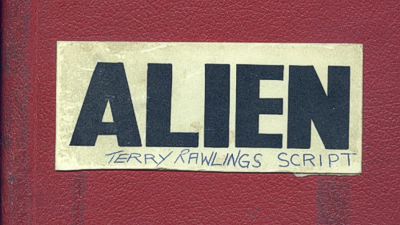
Out Of Efrafa…And On To Aliens,
Chariots And Blade Runners
AV: After becoming a picture cutter on Watership Down, and by the time of Martin Rosen’s next film The Plague Dogs’ original release in 1982, you had already confirmed a partnership with Ridley Scott, on Alien in ’79, and been Oscar-nominated for your editing on Chariots Of Fire in 1981. They must have been very exciting times?
TR: When Ridley was going to do Alien, I got a call from his office because he wanted me to do the sound. I said I didn’t want to do the sound, I wanted to cut it! So he said “You better come and meet the producers then”, which I did, and they were so interested in Watership Down, they kept asking me about it, and so I was talking all about that, and then at the end of all this I just said, “Well, can I be the editor on this film?”, and Gordon Carroll and David Giler, who were there, said “Of course!” I tell you what, I was flying my 747 home! It was fantastic! But I’ve never worked so hard as I did on that film. We spent hours doing that picture.
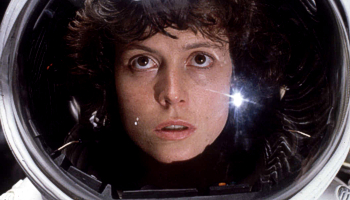 AV: As you say, though, you thought that it was just another film to be working on…and then it came out and became this huge phenomenon.
AV: As you say, though, you thought that it was just another film to be working on…and then it came out and became this huge phenomenon.
TR: Oh, Alien was one of the most exciting periods of editing I have ever had, I think, because I was doing this really for the first time on my own, having done Sentinel. Watership Down wasn’t quite the same. But this, even though it wasn’t a big film when we first started – it was going to be just an ordinary little horror film, or a little space journey film, nothing special – and yet it just developed into this monster, literally!
AV: Did Star Wars have an effect on that?
TR: Well Star Wars had been made just before, because we had a copy of Star Wars, and Ridley would say “Let’s run a bit of it and see how their effects work”, and stuff like that. I would slow it down, because he was saying “This is what we should try and emulate”, and I said “Hang on a minute”. I ran it slowly through and I said “You wouldn’t accept half of this stuff”. If you look at Star Wars, if you look at it and go through slowly…
AV: It did use a lot of cheats, mostly from the lack of budget, though. But if you know what you’re looking at, the effects were certainly of their time, especially the mattes, which I was surprised Lucas didn’t really fix when he did the updates.
TR: There’s matte lines, and it sort of goes away and comes back, and that sort of stuff. I said to Ridley, “You wouldn’t accept this. I mean you’re on about wanting perfection” and all this. Your run these things at full speed and you don’t notice it, but it’s there.
AV: Yeah, he wants Douglas Trumbull. He wants 2001, not all the matte stuff.
TR: That’s right. I mean they really did it fantastically in Blade Runner, I thought. The effects in that were amazing. And all they’ve done [in the recent Final Cut] is, because they’ve now got all this technical expertise, they’ve just tidied them all up. But they were brilliant, I thought, especially that blimp that went around…fantastic.
AV: That was Trumbull that directed those effects there. He’d become a director himself by that point, with a couple of underrated films, Silent Running, and Brainstorm, both of which I’m fond of. But, we were talking about Alien…
TR: Alien – we worked so long on that film, and worked so hard, doing the stuff on that picture. And I remember, you know when he goes through the air shaft tunnels?
AV: Tom Skerritt?
 TR: Yeah, he goes to the air shafts, eventually gets killed at the end of the day. We took ages editing this, we worked into the night. I mean every night we were there until about two or three in the morning. It was the early hours of the morning, we’d done it, and we sat there and we thought “this is really good”. Ridley and I thought we’d really done it. So we then invited two of the producers, David Giler and Gordon Carroll, to watch it.
TR: Yeah, he goes to the air shafts, eventually gets killed at the end of the day. We took ages editing this, we worked into the night. I mean every night we were there until about two or three in the morning. It was the early hours of the morning, we’d done it, and we sat there and we thought “this is really good”. Ridley and I thought we’d really done it. So we then invited two of the producers, David Giler and Gordon Carroll, to watch it.
We sit down and we run this whole thing, and they watch it, and I’d done it up with some music and stuff to make it interesting…and they said “Brilliant, but you know what you’ve done? You’ve got the alien searching him instead of him searching for the alien. You’ve got twisted over”. We’d got it all wrong. As exciting as it was, it was wrong. So then we sat down again and moved it all the other way around, and it all began to work then, which was terrific.
But the music was another interesting thing: I always did a lot of temp scoring, which caused a lot of angst between Jerry Goldsmith and myself. We didn’t get on very well at all. But in Alien, which was the first time we met, I wanted to temp the film with most of his music, if I could, from other films.
And so I temped those air shafts with the score he did for Freud, and the end of the film I did with The Romantic Symphony by Howard Hanson, and somewhere else I did with something else, and so on. But then when Goldsmith wrote his music they didn’t like what he did! So we kept Freud, they actually bought the Freud score for us, and they bought Symphony. He never spoke to me; he said “I’m never going to work on a film with him again”. But we did…
AV: You did Legend.
TR: We did Legend, and then on Legend I went and re-mixed one of his bits of music because I said we’re not getting the best out of this stuff. He went barmy, but he was right to do so. We had this showdown in the cutting rooms. There’s Ridley – this is into the night – Ridley’s over there, I’m sitting at a Steenbeck, and Goldsmith’s saying, “This can be cut, it can be cut!” So I said “Alright then! Alright”. Ridley said “You’ve got to do something because I’ve got to make a decision”. So I said to Goldsmith, “Right, you tell me where you want it cut”. We’re running it, and counting…and Goldsmith said “There!” I said, “Fine, okay, and you want to lose what, how many bars?” Very nasty, I was and he was, toward each other.
So in the end, got it marked up, take it off, wind down…the cutter didn’t work to cut the stuff! I’m going like this and it won’t cut, and I thought “Now I can’t even get the bloody cutter to work!” But I did get it to cut, and played it, and it worked. He said “Listen”…took his glasses and said, “I wouldn’t come in here and cut your film. I wouldn’t presume to come in and take your film and cut it, and I don’t expect you to take my music and do this”. I said “I’m very sorry about that, but you’re going to have to forgive me for my enthusiasm”, because that’s the reason these things are done. We really never really got on very well, but we did one more film: we did Not Without My Daughter, which he scored – I don’t think he did a very good score, but I don’t think he wanted to do it.
But he said to his agent, “I don’t want to work with him”, and the thing is my son said “I’d like to take you to a concert that’s on at the Festival Hall, and it’s Jerry Goldsmith doing his music, a concert of his music”. So I said “Oh…fine”. So we go up to this concert, and I can see a chap across the room, and he walks over and he says “Hello Terry, how are ya, haven’t seen you in ages”, and it was his agent! And he said “Ahh, I’m so pleased you’re here”, and all that sort of business, and I said “This is my son” and so on, and he said “You’ll have to come and meet Jerry. Come to the green room after the concert”. I said “Thank-you very much for the invite”. So, we go in the concert, and he gets to doing all these things from different films he’s done, and then he gets to the Alien section. And he said, “they had an editor on Alien, who thought his ideas were better than mine, so I just want you to hear what I would have put in if I had been given the opportunity”.
AV: No grudge, then!
TR: So, we go around, at the end of the concert, and Jerry comes out and he goes “Oh, f***! I didn’t know you were here!” Anyway…we ended up alright at the end.
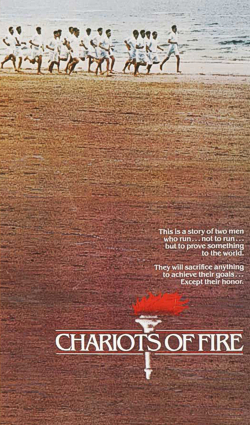 AV: That’s nice.
AV: That’s nice.
TR: Yeah but you’ve got to believe in what you’re doing.
AV: Oh absolutely. I’ve had a couple of run-ins with people when it was clear that what they wanted either wasn’t going to work because they didn’t have what they thought they’d shot, or – even worse – when they didn’t even have a fixed vision and were second guessing themselves over and over. But obviously Alien turned out pretty nicely for everyone involved in commercial terms, and then you went straight into amazing critical success with your next film. What was it like, going from being involved in Alien, a massive studio-funded blockbuster film, and then to Chariots Of Fire which became this hugely awards-laden flag-waver for the British film industry?
TR: Well you never realised what you were doing when you were doing Chariots; half way through the film I remember saying to Hugh Hudson “I think we’ve got something really amazing here. I just think it says so much about these people that it’s going to go big”, and he says “Don’t talk about it”. But I never thought it would go so big in America, I really didn’t. And I always remember, when I was in America after that, doing Blade Runner for The Ladd Company and Warners, and The Ladd Company had bought Chariots Of Fire to show in America. We went up to a place called Larkspur Landing, near San Francisco, for a preview of Chariots Of Fire.
I couldn’t believe, everybody stood up cheering at the end of the film! And it suddenly dawned on me, what it was all about: it was completely the way the Americans think. If you try hardly enough you succeed, and that’s what they believe in more than anybody, more than we do here. You know, if the little scrubby bloke from the street thinks “I can become president”, or “I can become the bank manager”, or all those things, and that’s what it’s about. That endeavor, that you will succeed if you try hard enough. And what with the camaraderie and all the rest of it, they love all that stuff anyway; that’s what I thought was great.
I remember on Chariots Of Fire we had thousands upon thousands of feet of racing, as you can imagine. Would have it slow motion, medium, normal, backwards, forwards, sideways together – I had shelves like this with all these cans saying that’s the hundred meters, that’s the hurdles, this is the so and so, and I said to Hugh Hudson, “Don’t let’s cut any of this…let’s cut the whole film without any races, because once we’ve got all that together, we’ll know how these boys will react to each other, and their friends would react to each other, during the races”. So he says “Yeah, sounds a good idea”.
So I did that and we got to it and I said “It’s Olympics day today, what race do you want to start with?” He said “Well we’ll start with the”…whatever the length of it was…“the hurdles”. I said “Well, we’ve got, you know, thirty thousand feet or whatever of this race!” So I start running it, we put the thing up and started running it, and I told him to tell me what he liked, and we got half way through this first racing material and he’s “Look, I tell you what. You get it together and if I don’t like anything then we can discuss it and find better bits”. I thought, he didn’t want to sit through all this stuff! So it was great…I could just do it the way I felt, and then, obviously he came along and said “oh, maybe adjust this a bit and do so and so”, but in the main, it stayed as it was; obviously it was adjusted to length, but I wanted to turn things into a ballet. We’d just had the Olympic games at that time hadn’t we, wherever they were.
AV: In 1980? I think it was Moscow.
TR: Well at that time you’d had all these fantastic films with all this wonderful footage of the people running, and we’re basically going to show the same kind of stuff all over again, so I thought wouldn’t it be nice to sort of show these things like a ballet with these great long dissolves, where they’re just going through one another. So I tried that and it worked.
AV: And then you had the Vangelis music, which came along and must have elevated it even further?
TR: Oh yeah, and you know the title theme that everybody knows? He hadn’t written that, and we’re dubbing this thing and we’re saying “Well where’s the title music? We haven’t got the title music! If you don’t get it soon we’re going to use this piece from Opera Sauvage”, that I’d put in as a temporary thing, when we showed it to people. So he says “No, I shall find something”. And right at the last minute, he comes rushing in, “This is it, this is it”. And it was that thing that’s obviously made him a mint of money.
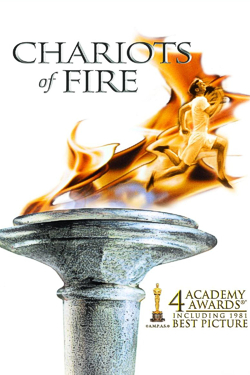 AV: The famous theme. It lives outside of that film now, doesn’t it? I mean, it’s become so synonymous with athletics, and even sport in general, sometimes. It’s certainly almost a musical shorthand for any running sequences, or gags in films whenever they create a slow-motion racing scene.
AV: The famous theme. It lives outside of that film now, doesn’t it? I mean, it’s become so synonymous with athletics, and even sport in general, sometimes. It’s certainly almost a musical shorthand for any running sequences, or gags in films whenever they create a slow-motion racing scene.
TR: It is now, yes.
AV: What was that like when you first saw them together: your picture to his sound? Because although they’re similar pieces, they’re quite different tempos, aren’t they? I suppose either would work because you weren’t cutting to a rhythm, like they over do now. You just let it breathe with the slow dissolves…
TR: Yeah they are different, but I always loved, obviously, Opera Sauvage, and I love this, what he did for Chariots. I love the build up to the hundred meters, when they’re digging in, all that stuff, that’s great. What made Vangelis’ music work so well was the contrast between Gilbert & Sullivan and the religious music.
AV: And then there was the release, all the critics went wild for it, and it got you an Oscar nomination! That’s a pretty big deal – what was all that ballyhoo like?
TR: Fantastic. Fantastic. All I can say is fantastic! We were really looked after, they flew us over there, and it was all first class. And the night was so exciting. Interesting thing is, a girlfriend of my wife, when they were young girls together, she was married to the man who was nominated for Ragtime, as production designer, John Graysmark. And when they were young girls they used to love getting the film magazines and always imagine that they were going to be in films and do it for real, like little girls do, and then we walked in, and there we were. They said “Here we are with our husbands going to the Academy Awards”, you know…amazing!
AV: One of your highlights.
TR: Oh that was special. It was a really special day, we had a marvellous time, and we didn’t win, but that doesn’t matter, it didn’t matter. But the film won Best Picture, which was great. And the producers Jay Kanter and David Puttnam were all getting sloshed together…it was great.
AV: As you said, while that was all going on, you’d already moved on to be back with Ridley on Blade Runner, where you’re credited as “supervising editor”. What’s the difference?
TR: The reason I’m down as supervisor, which is so annoying, is because they wouldn’t let me have an editor’s job, because I was not a member of the American union. I was over in America, meaning you had to have a cover, so I got this girl called Marsha Nakashima, and when we finished it, she never cut one frame of the film. Not one. She worked like my assistant. When we got to the end of the film, she demanded a joint screen credit with me, through their union. I said “Well you can leave me off and you’ll leave her off as well, we just won’t have any credit”. So they said, “Well, would you take ‘supervising editor’, we’ll give you a big” – because it is big – “give you a big ‘supervising editor’ on that. Everybody knows you’ve done it anyway, but you obviously couldn’t win an award for it or anything like that”. Her name, as another editor, is right down the bottom of the list. So that’s how that happened. It was purely political, which is a shame.
AV: That’s ridiculous. I think her name runs way into the end credits, which sounds about right. I’ve not seen it pop up on anything else of note. How did you feel about the recent Final Cut that I believe was created by yet another editing team? I don’t think you were involved with that?
TR: I wasn’t involved. The thing is if you look…you’ve got that set?
AV: Yeah, with the workprint cut and the final cut.
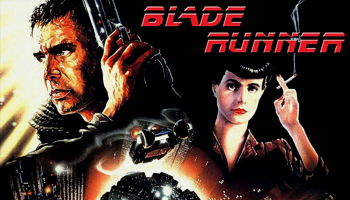 TR: Have you seen the workprint cut? It’s hardly any difference. So what they’ve done, they’ve gone back to the original thing we took to America in the first place, and put that in, and where they couldn’t find things they’ve just added bits and pieces, but there’s no extra material. It ends the same way.
TR: Have you seen the workprint cut? It’s hardly any difference. So what they’ve done, they’ve gone back to the original thing we took to America in the first place, and put that in, and where they couldn’t find things they’ve just added bits and pieces, but there’s no extra material. It ends the same way.
I think it’s okay, but it’s all those versions inbetween that are the worst ones. You know we had that original one that we took there, which was practically the best of them all, then we did one with the commentary, then they did a shorter one with the commentary, then a longer one with the commentary… Then by accident, the original cut got out again. You know about that.
AV: Yeah, the wrong print was pulled for a one-off showing. That was a staff screening up at Dolby, wasn’t it?
TR: No, it was a cinema on Santa Monica, which is like an arthouse. The thing is we went the second night there. I can’t remember what it was called, but it was a cinema there, and they had a special week of CinemaScope pictures. They wanted original versions of stereo CinemaScope pictures, they had The Sound Of Music, you know, The King And I, all those sort of things they had in there. And they said, “You got a copy of Blade Runner that we could run?” The bloke goes down to the vaults, and sends them the very first copy that we took over there. So they ran it, and all the fans were absolutely amazed: “Look, this is a new version with no commentary and stuff”.
They quickly took it back, but then it had got out, and then all this sort of stuff started coming out about it and it didn’t go away. So that’s when Ridley got involved and they decided to do that version without the commentary. But then they couldn’t find little pieces, they couldn’t find the unicorn stuff properly, so that wasn’t in there. So eventually they’ve done this latest version, and they’ve just tidied up so much stuff, but it’s basically that original film, and I think they did a good job. And I think it sounds amazing. We were invited to a special screening at Warner Brothers here, and I was really impressed with the way it looked and sounded. I thought it was fantastic.
AV: It’s a question that’s been asked and answered many times before, but I have to ask you again, in person. You know what’s coming: is Deckard a Replicant?
TR: Yes. In my opinion I think he is. And I think it’s great when the door closes, you make up your own mind. They’re not going off holding hands in a car, which was dreadful.
AV: The alternative “happy ending”, taken from footage shot for The Shining.
TR: That’s right! Yeah.
AV: Although now there’s more solid talk, after many years, of a sequel, so I’m not sure how that works if Deckard supposedly had a life expectancy of four years. Harrison Ford has been confirmed but he famously didn’t get on with Ridley during the original shoot, so it’s interesting that Ridley is just executive producing this time out, although it’s said to be based on his concept.
TR: I can’t for the life of me understand why they are going to make another one. They issued so many versions of the original, and at the time they said they didn’t understand it, which just goes to show you, doesn’t it?
 AV: So after Blade Runner we then come to Barbra. You worked with Ms Streisand on Yentl, her directorial debut.
AV: So after Blade Runner we then come to Barbra. You worked with Ms Streisand on Yentl, her directorial debut.
TR: That I loved, that is one of my great loves, that film.
AV: I saw that only very recently.
TR: I still think it’s amazing.
AV: What I didn’t understand, even though I could see it wouldn’t be everybody’s cup of tea, was how generally ignored it’s been over time, for what is a serious picture with something to say. I only saw it a few years ago, not only because I was too young to see it at the time – it was “long and boring” for me, you know, being seven or whatever I was in original release – but also because it was just so hard to get hold of. So I finally saw it some years back, and I was quite blown away by the strong feel of it, just the scope of it, and the authentic period it evokes.
TR: Yeah, it’s great. Made in Czechoslovakia, as it was then. That was a wonderful thing, and it set up a friendship that I’ve had ever since over in the Czech Republic.
AV: And you went from one big star to another, Barbra on Yentl to Tom Cruise, on an early film of his, Legend. This marked another collaboration with Ridley Scott, and the second time the film was…not exactly taken away from him, but they wanted to create an alternative studio-endorsed version. How did you deal with that after the same thing happened on Blade Runner?
TR: Well I didn’t hear about it being taken away from him. I know it happened on Blade Runner because I sort of tap-danced to stop that, because they said they were going to take Blade Runner, for instance, when they suddenly said to me “Ridley Scott has been fired, and we will be down in a couple of weeks to do so and so, and we’re going to start doing some cuts ourselves”. And I said “Well, er…” and when they did turn up, I said “I’m afraid I can’t show you anything because I’ve got it in bits” – we were preparing it for sound and all that sort of stuff – and I tap-danced around, knowing that he would come back, because you can’t fire a director that easily, unless he’s deliberately ruining your film, but you can’t fire him for his ideas, because that’s what you’ve bought. So then he did come back, but I never knew about Legend, them wanting to move him out for Legend.
AV: No, I’m not sure that he was actually taken off it, but just that there was this supposed fight over the cuts, the way there’s the “studio” cut and there’s the longer “Ridley cut”.
TR: Well I always remember us finishing that film, and then we had an answer print sent from either Technicolor or Denham. We ran it in the dubbing theater and we all thought it was absolutely fantastic. It was a beautiful print, and then that was going to be what it was. Then it went to America and nobody liked it. I didn’t go with it. Ridley went, and nobody liked it. And then they started saying “Well we’ve got to do something about it, we’ve got to cut it down”. So I did another version. I did three versions.
AV: Was that with Ridley?
TR: Yeah, I did three. I did the original version, which I think was, let’s say, two hours fifteen minutes, or two hours twelve minutes, or something like that. I did a version, they wanted it two hours roughly, so I made one about 1:59:59, and then they said no, they didn’t like that one either, it’s just too slow. So I did one, I think only came down slightly, let’s say one fifty, and they said no. So I said “I can’t go anymore” because I was going to go on to F/X, I think.
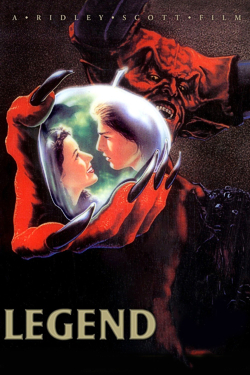 AV: Yes.
AV: Yes.
TR: And so then they gave it to this American slasher, who made it, what did he make it, 88 minutes? That’s the length of the Tangerine Dream one, and they put Tangerine Dream music on it.
AV: What was the story behind Tangerine Dream?
TR: I don’t know where they got that from. I don’t know how they decided on those. It was dreadful wasn’t it? But by then, when I came back, I was working at Elstree with F/X; they shot in New York and we got it back and were cutting at Elstree. Ridley said “I wonder if you’d like to see the version they’ve come up with?”, with this music. So anyway I saw this version through, and I absolutely hated it, and at the end he said “What did you think?”. I said “Well they got the first five minutes much better than we ever did”, which they had, they’d made a much better opening, “but the rest of it was completely ruined”. And he didn’t say much, I think he must have thought that, but he didn’t fight for that film, which I don’t understand.
AV: I remember speaking with you some time ago and you said that you didn’t think Tom Cruise was into it that much either.
TR: Tom Cruise didn’t like it. Read anything about him, any single thing that comes up he never mentions it. It’s the only film he never talks about. I don’t think he liked working on it. I think they made him look a bit “simple”. He was supposed to have been a simple character anyway, but I don’t think he liked that.
AV: So then what happened with you and Ridley afterwards, because you’ve not done anything since.
TR: No, well we sort of went our different ways because he was making all his stuff in America from then on, when you think about it. And once you fall out of line and then he got somebody else who he was happy with, then that guy’s been doing his films since.
AV: Pietro Scalia, yeah. It wasn’t because you and Ridley had a falling out…
TR: Oh, no. No! We used to occasionally meet on a plane. You know, I’d be going here, or he’d be going there, and we’re on the same plane, and he says “How are you doing? What are you up to?” and one thing or another. No we never fell out. It’s just that our timings were completely out of line.
AV: After Legend, the list of films you became involved in are an interesting mix of serious-minded, important or “worthy” topics (the Donald Cammell thriller White Of The Eye, The Lonely Passion Of Judith Hearne, again for Jack Clayton, and Not Without My Daughter) and a selection of what can only be called “crowd pleasers”. How do you pick and choose which films appeal to you? Is it down to the quality of scripts, the director, or whoever else may be involved?
TR: Well, White Of The Eye, I loved that film. Have you ever seen it?
AV: I’ve never seen it, no. It seems pretty hard to find [a Blu-ray has since been issued in the UK].
TR: Ahh, it’s a strange, strange film. It’s about a killer.
AV: I looked up details on it and I was intrigued, because it was directed by Donald Cammell, who did…
TR: Performance.
AV: Performance, which I think is brilliant, and I’m a fan of that bonkers sci-fi he did, Demon Seed.
TR: He was a crazy man, you know, he killed himself. Shot himself. Fool. But he was really quite weird, but fun. And it was a wonderful editing exercise; we did all the tricks and I think about 80% of the film was Steadicam, so you had these wonderful dialogue scenes that were just slightly moving. You’ve never seen it?
 AV: I’ve never been able to get hold of it, but I’d love to see it. Just looking up and reading about it, I thought it sounded interesting, and I didn’t realise it was his film either.
AV: I’ve never been able to get hold of it, but I’d love to see it. Just looking up and reading about it, I thought it sounded interesting, and I didn’t realise it was his film either.
TR: It is hard to get hold of, but I taped it on television years ago. I’ll lend you the VHS. It’s about this bloke who’s a murderer. Kills these women, but he’s really virtually saved by his wife. Yes, it’s interesting. An interesting, strange, strange film.
AV: You seemed to have gone off into this direction of smaller, what I guess they would call “independent” films now, around this time, mixing things like that and Judith Hearne and Not Without My Daughter…
TR: Judith Hearne was another favorite of mine, I loved that film. Did you like that?
AV: Judith Hearne? I did, yeah. I love the kind of stuff Bob Hoskins was doing around that time, I’m a bit of a Hoskins fan anyway, from Pennies From Heaven onwards, which is why I think I first saw it, on video. I’ve avoided the DVD releases, which are apparently awful. Again that was Jack Clayton directing, and of course that was with Maggie Smith.
TR: She was wonderful. Maggie Smith was superb.
AV: Yeah, and it’s interesting to see how you approached that one, because I’ve noticed, with your films, that you tend to approach the big, broad commercial stuff with a slicker crafting of the material, with quicker cuts, more emphasis on visual storytelling. And on the more personal stories, perhaps where characters are more introverted and where the actors are telling more in their emotions and faces, you let it flow more smoothly, without editing taking attention away from what needs to come over in a scene.
I know it’s to do with how something is shot as well, naturally, from the lighting to the framing, but Judith Hearne is one of those films where the editing’s supporting terrific performances, and just follows it through without being intrusive or noticeable at all, which is about the best thing that someone can say about cutting a film.
TR: And it’s got that great dissolve in it too, when she’s in bed…
AV: Oh yeah! Was that luck, or was it designed that way?
TR: I love that dissolve, I love it. I just found a position where these two pieces of film would just create that.
AV: And that was by chance? Just by playing with what you had?
TR: Yeah, you just try it and try it, but it was wonderful. It just appears; her head goes out into the thing. It’s wonderful, I love it.
AV: I love it when there’s a moment like that when you’re cutting, where something works visually almost by accident and, basically, no one else would either even notice or think that you spent ages getting it perfect. Actually, one really nice moment like that, like a seamless dissolve between scenes, can even make a whole project work, for me, if other things aren’t working. It’s like a little private moment that only you really knew how you created it.
TR: Yes, because I love dissolves anyway.
AV: And then you started mixing those kinds of films, like Not Without My Daughter…
TR: Brian Gilbert directed that. A friend of mine.
AV: Right, and you mixed films like that back in with the broader projects, like F/X: Murder By Illusion, Slipstream for Tron director Steven Lisberger, and another Michael Winner comedy, Bullseye!, with Michael Caine and Roger Moore, which you mentioned…
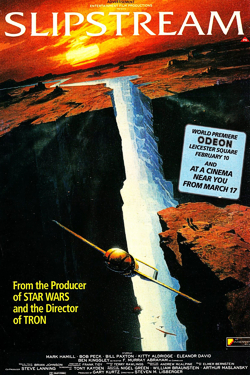 TR: Bullseye I never did.
TR: Bullseye I never did.
AV: No?
TR: I mean that one should be taken out of my listings, really. Because I was going to do it, but because he wanted to take over I left it. I started when they started and was cutting the film, and my whole point was, “If I’m going to come in as the editor this time, you’re not going to cut any of it”. I said to him, “You can tell me what you don’t like, and I’ll change it, but I’m either your editor or you’re the editor”. “Fine”, he said.
So we go on like this, and I cut some sequences, and he’d say “I’m shooting a sequence tomorrow with so and so, leave that for me”. I said no. And then we got into this big thing about “Don’t you cut”…“I want to cut this”. I said, “All right, I tell you what”…I went to his office at the end of the day and said, “Look, I’ll look after this film while you’re shooting it; as soon as you’ve shot it I’m leaving. You want to cut it? You cut it”. He said “What a gentlemanly thing to do!”, and we shook hands.
AV: And then he did go off and cut it!?
TR: Then he did. And it was dreadful.
AV: Okay, moving on! You also hinted about Steven Lisberger, who directed Slipstream, earlier on. Tell me about that, because he did Tron, which was another big sci-fi film that came out in 1982 and, like Blade Runner, took a while to find its appreciative audience. I count myself among them, but I’m not sure I ever warmed to its director…
TR: That man was really strange, though.
AV: I always felt that, reading about him, that he was a geek just on the wrong side of taking things too seriously. It’s interesting.
TR: But you know he would do things like go to rehearse a scene; here’s an example: at Pinewood, they built this amazing bar set. Have you seen Slipstream?
AV: Yes, once a long time ago! And then again in the middle of the night on television.
TR: You know the bar with all these crazy sort of people in there, rather like the Star Wars thing, a bar like that. But it was beautifully done this bar, and it had windows at the end that overlooked this runway, which was done at the Studio. And there were microlights landing on there and flying by, and doing all this stuff, right? That’s the set you’ve got to work with. He puts the two people that are going to talk in this other corner, where you see none of that, and you see none of these windows!
And then another scene, what he did, he would go into a place and he say, “First of all”…instead of blocking out the scene…he’s got about four or five actors in a scene, and before he blocks it out, he brings the cameras in, and he says, “Right, this is what I want: I want this to do this, going here and then we do this and it’s coming around here, and this is going to do so and so, with the camera moving around”. Fine. “Okay, bring the actors in”. The actors come in – now they can’t get past the cameras – and the thing is, say the final line is the punchline, something like “I will kill you!” or the stabbing, and they’re off camera! He said “But people can hear it, they know what’s going on”! I thought I cannot believe what’s going on with this bloke. And it was so sad because it was such a great idea, we had a marvellous scene that was done in a museum place, and it all got cut out. I mean it was just terrible what happened to that film.
AV: And then that died as well, understandably.
TR: Yes it did! I found a DVD of it in America though. You can always find a DVD of these things somewhere.
AV: And then I guess that you would have been quite excited by the prospects of your next project, which would return you to the Alien series, but then that also turned out to be something of a trial…
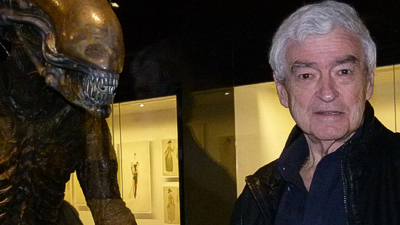
More Genre Hopping: Back To Alien, Taking On
Bond (And An Ex-007!), Phantom — And Beyond…
AV: I expect we could fill an entire other interview with what happened on Alien 3, but in short this was another film over which the Studio disagreed on the final version with the director, in this case David Fincher, who I’m very much a fan of. Did you get on with him?
TR: Yes, I liked him. But it was his first film and they didn’t trust him! They gave him this opportunity and they didn’t trust him. The problem with Alien 3 was that Mr Fincher, who’s a perfectionist, was too slow. So when his time was up, when virtually his entire shooting schedule was up, he hadn’t completed it. And so we were told we had got to come back to America, to pack it all up and take it back to America…
AV: Because it was all shot at Pinewood.
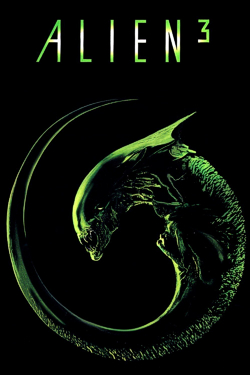 TR: Yes. Take it back to America, get a cut on it, and then see what it needed to make it sort of work. So when we got it all together and looked at it, he said “what do you think?”, so I said “well, we need, say A, B, C, D and E; we want these things done”. So then they have all these meetings…you have a roundtable meeting with the head of the Studio, and all these so-called “creative people”, and they say, because to start up a production costs a lot of money, so they say, “Well, I’ll tell you what we’ll do then. We’ll do A, C and E, and that’ll make everything fine”. I said “Well we need everything, we need more than that”, but “no, that’s what we’re going to do”. So they start production up, they bring over the cameraman again, and get the people together.
TR: Yes. Take it back to America, get a cut on it, and then see what it needed to make it sort of work. So when we got it all together and looked at it, he said “what do you think?”, so I said “well, we need, say A, B, C, D and E; we want these things done”. So then they have all these meetings…you have a roundtable meeting with the head of the Studio, and all these so-called “creative people”, and they say, because to start up a production costs a lot of money, so they say, “Well, I’ll tell you what we’ll do then. We’ll do A, C and E, and that’ll make everything fine”. I said “Well we need everything, we need more than that”, but “no, that’s what we’re going to do”. So they start production up, they bring over the cameraman again, and get the people together.
AV: Is this still with Fincher?
TR: Yes, and they shoot this in Fox Studios, Los Angeles. Then I get that in, and we look at the film, have another couple of meetings, and they say, “Seems to me you need B and D”…exactly what we said! So they start up again and do those, and we get it together, and they say “Well, it doesn’t seem to work”, and all that sort of business, and we need to cut it down, and lose this and lose that, and they started cutting everything away from it. They started cutting things like the fact that the Golic character lets it out…have you seen the refurbished, back to the original version?
AV: Yeah, I’ve seen that.
TR: You know where he lets it out, it was all cut out, so there was no reason for it to be on the loose! And the whole front was taken off, you know with him wandering along the beach and seeing the thing crash down, carrying the body in, all that stuff…
AV: The things that actually make sense!
TR: It was all taken out! So, and then I used to have to fight for all these things all the time, because Fincher had virtually given up. He said “Oh right, if you don’t like what I’m doing I’m off then”, and he just would never be around. So I’d work something out with him, and then these “creative guys”, you know you get these sort of people who really don’t know much: “What we think you should do here is this”, and you know they start saying “this, this, this”. And I said no, it won’t work like that. Who was the head of the Studio then…he’s now left and he owns his own company?
AV: Oh, Joe Roth?
TR: Yes, Roth. Joe Roth. He was alright, I liked him. So they say “Joe Roth says that he wants this that and the other”; I said “How can he say that, he hasn’t even seen it!” And they say “Well that’s what he said, and that’s what we want done”. I said “Well, I don’t agree with you”. So I had this argument with these people all the time; then Birmbaum comes over, who was number two, he said “What’s going on here?” I said “Well they keep telling me that Joe Roth wants me to do so and so, and Joe Roth’s never been here, and if he wants me to do it he can ask me himself!” I thought I don’t care if I get fired, I want to go home anyway. I was there for eleven months, no thirteen months in America doing that. So in the end I put together this thing the way they were saying to me, and I had a twin screen Steenbeck and kept my version as well. Eventually Joe Roth comes over, and says “What is going on in this cutting room?” I said, “Well, these two people have said that you want me to do this, and David Fincher and I feel this is the best thing for the film”. He said “Right, let’s sit down and let’s look at it”. So I showed him mine, and I showed him the one they want. He said “I much prefer yours”, and he walked out.
AV: And that was it?
TR: I mean it’s just terrible the way they worked there. By committee.
AV: So what was the final version then? Still a compromise?
TR: The final version that went out was the one with all the bits cut out of it. That was the “original version”, they called it, you know, with it all cut out, and you can understand why it didn’t go down very well.
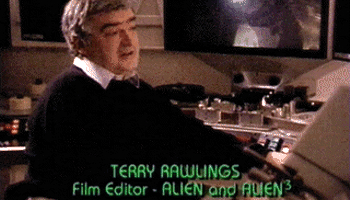 AV: So Fincher was off it by then?
AV: So Fincher was off it by then?
TR: Yeah, I think he finished and he left it then. Because we did the mixing when the LA riots were on. And the thing is we were in the dubbing theater, we were working away like this, and I thought “Where is this?” and suddenly we get a phone call from Fincher, who’s now up in Malibu, virtually, he shot up there in his car; he said “I think you should leave the studio because there’s all this rioting going on in the streets”. And I was like “We’ll finish this reel!” And then you sort of ran the gauntlet to get out.
AV: So on a situation like that where you’re working with a director but you’ve got to please the Studio, where do you sit?
TR: Well it’s the same as Blade Runner, the director comes first. In my mind the director comes first. They hired him, it’s his ideas, unless he’s a complete idiot like Lisberger. But Fincher is brilliant, I think. Look at his films right after that, look at Seven, which is outstanding. I think he’s very talented.
AV: Fight Club remains his most all-enveloping film for me, where everything was just absolutely perfect, but I have to say I wasn’t a big fan of Seven; I thought Seven was a bit disappointing.
TR: Oh Seven I thought was great.
AV: I don’t know if it was me, but it was pretty obvious that Kevin Spacey, when he came in, wasn’t to be trusted and the end, I don’t know why, but it just didn’t grab me in an emotional way, didn’t react to it. I probably need to see it again, really, because I only saw it the once, when it came out.
TR: The Game.
AV: Oh The Game I thought was fantastic.
TR: It was great some of that stuff…and the taxi ride I thought was wonderful. A bit of a cop-out ending though.
AV: Mmmm, perhaps, but you’re still not quite expecting it. I love the way it ramps up. It just takes its time, in slowly ramping up, which is lovely, and then it hits and for a moment you’re wondering if you missed something. Panic Room, which doesn’t always get good notices, was another film of his I liked.
TR: Panic Room I didn’t like. I thought he just over did all his clever stuff with his camera, going through the objects and everything. Because we did some experiments, I think when we were doing Alien, with this special camera.
AV: Was that the camera that gave the alien’s POV?
TR: Yeah…you can go inside a bottle, it’s just like a magic eye, and it goes into the bottle, and then you can come up that and pull all the way back and show the whole room. I mean that was fantastic stuff.
 AV: Yes, that was Alien 3, a very good effect. You then partnered with Martin Campbell on a couple of films, including bringing back James Bond in, as I like to think of it, a stripped down, no-nonsense GoldenEye with the introduction of Pierce Brosnan. It basically did away with a lot of all the overblown stuff and was a really good, tight, Bond picture, with a really good, new Bond.
AV: Yes, that was Alien 3, a very good effect. You then partnered with Martin Campbell on a couple of films, including bringing back James Bond in, as I like to think of it, a stripped down, no-nonsense GoldenEye with the introduction of Pierce Brosnan. It basically did away with a lot of all the overblown stuff and was a really good, tight, Bond picture, with a really good, new Bond.
TR: I thought it was good fun. It was the first one that was a bit down and dirty in places, which was good, it needed that. And that’s where they’ve gone now with it.
AV: Yes, especially when Campbell came back again to do Casino Royale. Were you invited to work with him again on that – another introduction of a new Bond, this time Daniel Craig – or on his recent Zorro pictures?
TR: No, I’m afraid. When he was going to go and do Zorro I got asked to, but I couldn’t do it because I was busy on whatever I was doing…
AV: That might have been Entrapment?
TR: Yeah, it was Entrapment. I was doing Entrapment and I couldn’t get away from that, and he used Tom Noble I think. And then, when I met him, because he came to the screening of Entrapment that we did at Grauman’s Chinese Theater, and he said to me, “I’ve got to say to you that I won’t be asking you to do my next film because you did two with me and I want Tom to do another one because we got on very well”. Then he didn’t get on so well with him and he’s got on with somebody else and that’s it, really.
AV: So you didn’t get asked to do his second Bond film?
TR: No, no.
AV: I thought his Zorro films were brilliant.
TR: Yeah they were good fun.
AV: Terrific fun, I seem to be one of the few that thought the second one was better than the first.
TR: But the first one had that most marvellous first ten minutes! All that chasing around and the horse on the top of the building, just like the old films.
AV: Yeah, but the opening of the second one is great as well, where they’ve got all those spears being thrown in to the side of the bridge, and he’s dancing across on the spears…I loved that. They’re really “old fashioned” films, like you say.
TR: They are! Robin Hood! That’s a great film.
 AV: Yeah, exactly. So then all your most recent films have all been intended blockbusters, from The Saint and US Marshals, to working with another Bond, Sean Connery of course, in Jon Amiel’s Entrapment with Catherine Zeta Jones, The Musketeer for the near-legendary Peter Hyams, and The Core, again for Jon Amiel, who also incidentally re-opened Elstree Studios in 1996 with the underrated Bill Murray comedy The Man Who Knew Too Little, which had a much better shooting title, Watch That Man and which I truly think is a hilariously funny film.
AV: Yeah, exactly. So then all your most recent films have all been intended blockbusters, from The Saint and US Marshals, to working with another Bond, Sean Connery of course, in Jon Amiel’s Entrapment with Catherine Zeta Jones, The Musketeer for the near-legendary Peter Hyams, and The Core, again for Jon Amiel, who also incidentally re-opened Elstree Studios in 1996 with the underrated Bill Murray comedy The Man Who Knew Too Little, which had a much better shooting title, Watch That Man and which I truly think is a hilariously funny film.
TR: I was never a fan of his. I’m not a fan of Bill Murray, I don’t know why, he just never appeals to me when I see him in films.
AV: No?
TR: No, it’s the same as Carrey. I can’t bear looking at him. He pulls those faces all the time and that mouth. Jim Carrey.
AV: How do you choose the films that you want to do? Was it a conscious choice to come towards the end of your career with those specific types of blockbuster films, or is it down to the script or whichever director’s involved?
TR: Well it’s usually the directors. I like working with certain people, like Jon Amiel. I just got invited to meet Jon Amiel at Pinewood when he was going to do Entrapment, and as soon as I met him I liked him very much and I thought well, he’s the sort of chap I’d like to work with, and we discussed everything, and it just turned out very well. And when he was going to do the next one, you know, The Core, then he’d phone me and said “I don’t want to do it with anybody else”.
AV: What was that like, working with another Bond, Connery, on Entrapment?
TR: Oh I think he’s wonderful. I think he’s the best.
AV: He’s the dude.
TR: He is the dude, he really is! I mean he used to come into the cutting rooms and he said, “Hello boy! How ya doin’?” and all this stuff, he said “Let’s have a look at some stuff”, because he was one of the producers of that, and he’d look at it and say “oh, it’s going pretty good, eh?” and he didn’t have very much to say. I used to have him and Catherine Zeta Jones come in and look at stuff, and have a few remarks, but I really liked him, I thought he was very good and he was very fair and understanding when he talked about anything that he needed changed. You know, he’d make a good point. And of course there was Jon, I very much liked Jon.
AV: We mentioned The Musketeer. What was that like working with Peter Hyams, because I think he’s quite underrated.
TR: So do I. I think he’s really very clever. One of his big problems is he wants to do everything.
AV: Yes, he shoots it all as well.
TR: He does, and he’s a good cameraman, but the thing is he loses out jobs because of it, because they want him to direct something and he says “No I’m going to photograph it”, and they say “No, we just want”… He really should get a good cameraman, or just do a film as a cameraman if he wants to, but don’t try and do every single thing, because it’s just too much pressure I think. But he did a good job on that film, and I think when you see it now it’s good to see it on the television, it runs well on telly, I think, but it’s not sort of big enough to stand up in the cinema as a big film.
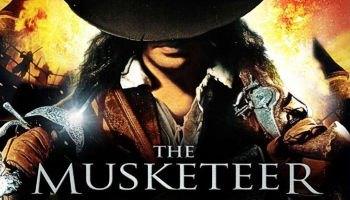 AV: I heard there was quite a lot of that cut out?
AV: I heard there was quite a lot of that cut out?
TR: Well things were cut down, but I think the worst thing he did was to choose that bloke as the Musketeer.
AV: I haven’t seen it.
TR: Haven’t you seen the film?
AV: No, I haven’t seen it, no.
TR: Absolute prick, this bloke. And I said so – I used to send messages to him because they were shooting in Luxembourg, and I’d say “Could you put a rocket up your leading man’s arse because the thing is he is terrible”. I said “Show him a couple of Errol Flynn films”, because that’s what he needs to copy, you know that sort of swashbuckler…
AV: And bravado.
TR: Yeah! I mean, but he was terrible, and it just let the whole thing down. I thought that the other Musketeers were pretty good, but not him.
AV: And then, going back with Jon again, what was The Core like?
TR: The Core I liked. I saw it again the other night, and I was really quite proud of it. I looked at it and I thought “Well, I think I did a good job there”. Especially one scene, I love one scene near the end, when they’re all fighting and when Stanley Tucci does his absolute nut in, when he goes mad and they knock him out? I think the whole build-up of that scene is one of the best cut things I’ve done, the interaction between the people.
AV: The whole film harks back to those disaster movies in a great way. I mean it’s a bonkers film anyway, with that thing tunnelling through the earth and so on, but it’s done with such sincerity.
TR: Oh yeah, it’s all impossible stuff, but then so is Journey To The Centre Of The Earth.
AV: The Core and, more specifically before that, Entrapment, was the first time you went from film to digital cutting, wasn’t it?
TR: Yeah it was, because of Jon. He said “I like to use Lightworks”. I said “Well, I’ve never used it”, and so he said “Look”, he said, “I’d like you to try it. If you don’t like it and you don’t get on with it then we’ll go back to film”, but he said “I prefer that”. So I took it on, and after about two weeks I thought “This is great! Why didn’t I go with it before?” and I liked it and then I did everything else on Lightworks ever since.
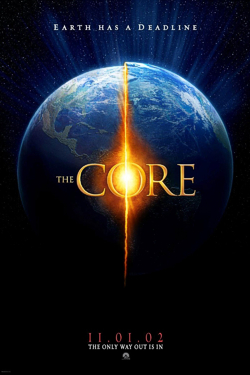 AV: Yeah, I learnt the original Lightworks back in ’87, or something like that.
AV: Yeah, I learnt the original Lightworks back in ’87, or something like that.
TR: Lightworks is so good because it’s just like an old Steenbeck.
AV: It’s just like a Steenbeck, because you’ve got the wheel with it.
TR: That’s right.
AV: And that’s just what I liked about it, because I started off as a teenager doing 35mm logging, for commercials, when I was, you know, a wee lad.
TR: All the numbers!
AV: Yeah, all those numbers…oh God! And prepping everything for it to be digitised, and all that.
TR: You had to be so accurate, doing what you were doing.
AV: Oh, yeah, absolutely. And so I would hang around the edit guys at this company and watch how they cut and put all the trims on the thing, and then I learnt how to use the kit. And then when Lightworks came along, a lot of them were afraid…it was this imposing box sitting in a room at the end of the corridor. A lot of them were against computer editing, but there was this one guy who kind of took me under his wing, I guess he saw me as the future and that I should know how to use this, and he said, “Come on, let’s give it a go, let’s get on top of this thing”, and he showed me how to use it. I thought “Well this is just like a Steenbeck, this is brilliant”.
TR: Yeah, it was. They just lost funding, they never really got the right funding.
AV: But then I learnt that well enough, and then took a few years out of cutting – I went on to do some shooting as a director of photography, which I kind of fell into for a couple of years – and then came out of that, because I wasn’t always crazy about it, and thought “Well, I can do that, but editing is where I really enjoy the process as well as being more confident with it”. So I went back to editing and, of course…
TR: It was all Avid.
AV: Lightworks was pretty much gone! It was all Avid! And I don’t like Avid, I just can’t get to grips with it.
TR: Yeah I know what you mean, because I went to help out on a couple of films. Since I’ve retired, this chap who was my assistant for 18 years, he’s now a post-production supervisor, and he deals with lots of productions that are in trouble, sorting them out. There was this film, a Wesley Snipes film called Gallowalker… It’s the worst film I’ve ever seen in my life, and I think they had about four editors on it trying to do something with it. So they phone me and said “Would you come and have a look at it and just tell us if there’s anything that can be done”. So I had a look at it and I spent two weeks with them, went through it and made another version, which they quite liked, even though it still didn’t make sense, then I did one other touch up on that, but that was all on Avid. And I hadn’t a clue how to work it, but this chap knew Avid and he showed me, and after a few days then I got used to it. But it’s not the same as Lightworks. Lightworks is so simple.
AV: With Lightworks, if you want to make a cut, you make a cut. But with Avid you have to say “I’m about to make a cut. Right, now I’m making it. I’ve made it and now I’ll take you out of cut mode” and it takes longer and is just frustrating…
TR: Yeah. And now there’s Final Cut.
AV: Now that’s…it’s a little bit in the middle, it wasn’t quite as fluid as Lightworks, which was just lovely, but recently Final Cut has been updated and now works really well with Apple’s touch mouse. Lightworks did try to come back with Heavyworks.
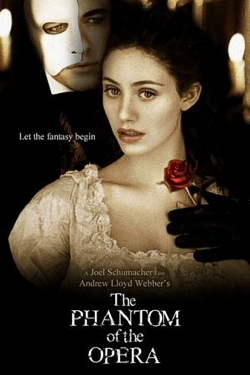 TR: Yeah, that’s it, I worked on Heavyworks.
TR: Yeah, that’s it, I worked on Heavyworks.
AV: Did you? I never played with Heavyworks.
TR: It was virtually the same, but just they had updated the computerised side, and all that business. But it was a marvellous thing. I mean we did Phantom Of The Opera. And Phantom Of The Opera had a lot of material, and the thing is we only used sort of just over half our memory and we never missed-cued one number, it was perfect. It was great, all the edits came out perfect. It’s a pity they got rid of it. Well, they haven’t completely got rid of it.
AV: No, you can still hire them.
TR: But no-one really is involved in sponsoring it anymore.
AV: No…well then I got involved with a company called In:Sync, and they made the SpeedRazor machine that started to build a little niche. Again it didn’t have the Steenbeck wheel, but it was very simple, it was very quick cutting, and they had just started to build up the effects you could do with it. I think Sony Animation cut some of their earlier stuff on it, but mostly it was a picture cutter, it threw out an EDL and they could go back to the neg and cut from that.
TR: Yeah.
AV: But there was the same kind of battle between Razor and Avid, and that’s what really got Avid to lower their price to compete and they swamped the market with a cut-down product that killed Razor off. But it’s such a pain to use, I’ve never got into Avid.
TR: No. What do you use now?
AV: I’ve been using Final Cut, which I read Walter Murch was a fan of.
TR: Ahh, mister Murch!
AV: He cut Cold Mountain as the first major feature to be done on Final Cut, and now with this X update it’s so flexible with the amount of formats and tweaks you can carry out. I was thinking of going with Avid Symphony, because it’s just the more recognised name in the business, but the more I look into it I think Final Cut X just has the more interesting new way to cut, so it could be that set-up I go for in my new suite. But we’re veering off the subject!
TR: Okay, okay!
AV: Your final screen credit – so far, and it doesn’t sound like you’re going back to work – was for Joel Schumacher’s version of Andrew Lloyd Webber’s The Phantom Of The Opera, which as I was saying to you the other day, I have warmed to it over time…
TR: Good!
AV: Because, as you know, I had a few problems with it when it came out in 2004. Mostly based around what you said, about the Phantom himself not really being disfigured enough.
TR: No.
AV: And I thought the casting was a bit skewiff. I actually went, and I’ll tell you why I went to see it, because I didn’t even know you’d done it at the time, you know. But why I went to see it was because a friend of mine, who I was involved in on another project, was Gerard’s stunt double, in the sword fight.
TR: Oh was he? That was a good sequence. That sword fight was a good sequence.
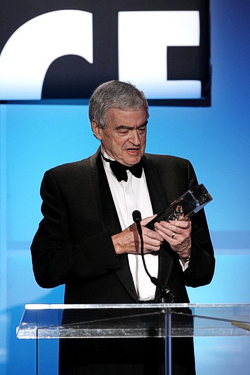 AV: Yeah……actually, he also doubled Bond in GoldenEye and the cat burglar in Entrapment too, coincidentally, but that’s why I went to see it originally, because I’d seen the stage show, and I nearly got to see it on Broadway, actually, which was a pain…we got there and were sixth in the line for the late tickets, you know, and I think It came down to about four! But [my now wife] Jenny was over waiting in line for The Lion King, so we ended up seeing that instead, which I thought was better, so it didn’t turn out too bad at all.
AV: Yeah……actually, he also doubled Bond in GoldenEye and the cat burglar in Entrapment too, coincidentally, but that’s why I went to see it originally, because I’d seen the stage show, and I nearly got to see it on Broadway, actually, which was a pain…we got there and were sixth in the line for the late tickets, you know, and I think It came down to about four! But [my now wife] Jenny was over waiting in line for The Lion King, so we ended up seeing that instead, which I thought was better, so it didn’t turn out too bad at all.
TR: I saw Phantom in London.
AV: Yes, we saw it in London as well. And actually I think the film is probably better than the show, as innovative for the time as it was.
TR: Well I think it’s got more scope. And I love the chandelier crashing, all that stuff worked very well.
AV: Much better than the show, where it takes half an hour to drop due to the safety precautions. And I liked the opening, the way the music crashes in, and the camera swerves through the seats of the theater, and you’ve got all that sweeping stuff, like magical fire, dancing around the chairs. Lovely stuff.
TR: Yeah, all changing, going back through time.
AV: So Joel Schumacher often gets quite a bit of a bad reputation for some of the films that he’s done, especially his two Batman films, which he was almost a scapegoat for it seems, but I understand you got on well with him. How did he pick you for this specific project and what was the draw in it for you?
TR: I think I got suggested to him by one of the other producers. My memory for names is terrible. But, anyway, I got suggested by another producer to meet him. And so I met with him and we chatted for half an hour and at the end of the half an hour I left and said “Thank-you it’s been nice to meet you” and stuff, and then later that afternoon I got a phone call from the other producer saying “He wants you to do it. He’d like you to do it, he’s seems to think that you’re going to get on very well”. And then when I went back, when we started, he said, “Look, I just want you to cut the film. I mean you cut the film”, he said, “and you don’t have to worry me about it, just cut it as you think it should go, and then at the end we’ll look at it together and if there’s things I don’t like we’ll change”. So it was a really great way of working, and then at the end of it he said, “I like to change my crew every time”, you know, so he said “It’s been a pleasure working with you”, but virtually saying I’m not going to ask you back immediately or whenever, because he likes a fresh challenge every time, which is understandable as well.
AV: Which actually, if you look at his films, they’re all different. They’re all different films, which makes him an interesting director. I absolutely adored Falling Down, which was pretty hard stuff than what he had done before, considering that he’d started out as a hairdresser, hadn’t he?
TR: Yeah, he was a hairdresser; he’s a gay man, and then he was, well he was a hairdresser, but then he was in the art department, I think.
AV: That’s right.
TR: He’s funny and he’s nice, I think he’s a nice chap.
AV: He comes over as that, and what I really was impressed with was when he did a commentary track for Batman 4, that he’d done and which is a pretty terrible film, but he knows it. And that’s the thing, because on this track he was basically saying, “Look, I know this is terrible”, and he explained how Warners had said to him, “You’ve got to put Batman on a bike because we can sell a Batman toy”, and all this kind of stuff. He doesn’t exactly “apologise” for it but he explained why, and that he knew it was bad, and that the casting was off, and I thought good on him for going out there and saying, you know, “I’ve done the third one, we’re coming back and doing the fourth one”, but instead of having more control the Studio pressurised him into some bad choices. But I thought that was decent and, you know, honest of him as well, to reveal all that.
 TR: Yes it was. I like watching him work too, and the thing is when, like Masquerade in the film, the big dance number; he goes on that set, those wonderful sets that were built for that thing, it’s incredible. And he just goes, “Yeah, we’ll just shoot from…here, then I’m going to go there, then I’m going to do this and then I’m going to do that…fine, let’s get on with it”. And it all works, it all cuts together so nicely, you know, he knows what he’s doing. He’s an old hand.
TR: Yes it was. I like watching him work too, and the thing is when, like Masquerade in the film, the big dance number; he goes on that set, those wonderful sets that were built for that thing, it’s incredible. And he just goes, “Yeah, we’ll just shoot from…here, then I’m going to go there, then I’m going to do this and then I’m going to do that…fine, let’s get on with it”. And it all works, it all cuts together so nicely, you know, he knows what he’s doing. He’s an old hand.
AV: So then going from that, it must be hard for someone who had an average of one film per year to work on to suddenly call a halt to it all?
TR: Well Jon Amiel [pictured right with Terry] phoned me just before he started his next one, about six, seven weeks away. He phoned me, because he started this film about Darwin, and he said “I don’t want to do it without you”, and I said “Well, I don’t edit anymore”. I told him, “No disrespect to you, I’d love to work with you again, but I don’t want to change my mind now. I’m very happy doing what I do and I wish you the best of luck with it”. So, yeah, we would have been working together still, but he had a big gap between his last two, he couldn’t get anything going, and he did things for American television, which I wasn’t involved in.
There was a film he was going to do, and it’s still down to be done, about the Second World War, and the German prisoners who work at the prisoner of war camps here in England, how they worked on the farms, like laborors, helping out. Where all the English blokes who had gone off to war, there was all this fraternisation, the wives might get too friendly with so and so, and there were some really bizarre, macabre goings on, with this strange lady; she was like a witch who got rid of these people.
AV: Oh!
TR: Yeah, it sounds very good. And he was going to do that and then they couldn’t get the final money together. But they’re still hoping they’re going to do it.
AV: Ahh, that sounds amazingly intriguing.
TR: That I would have liked to have done. I was all ready to do that and then it fell through.
AV: Oh right, so you would have done that after Phantom?
TR: I would have done that, yes. Jon’s a nice man. In fact when I got my career achievement award in Hollywood, I wanted, at the time, Joel Schumacher to present it, because you could pick whoever you want. Anybody, and they would ask them. I think I also I listed down here Barbra Streisand, somebody else and somebody else. They asked, the ACE, they will contact them and find out if they’re available to do it, you know, and Joel said he couldn’t make it because he was in the middle of a film, and it was all falling about and I thought suddenly thought “Jon Amiel”, I really love Jon.
AV: I had a great couple of hours on the Watch That Man set, where he kept everything moving fast but making it fun. Again, he’s able to direct very different films, from thrillers to comedy.
TR: Yeah. So I asked him, I phoned him and said “Would you like to present this to me?” and he gave the most wonderful speech, it was really terrific, and then when my time came, they said “Just a minute”, and up on this huge screen, it was Joel Schumacher. And he said “I’m sorry I can’t make it today”, but he said “I’m sure you’re going to have a great evening” and all the rest of it, “It was great working with you, doing Phantom”, you know, all nice comments, and all the rest of it, and he said “If I go on much longer you’ll only want to edit it so I’ll go now!”
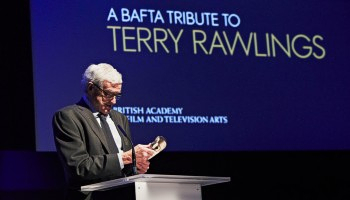 AV: Brilliant.
AV: Brilliant.
TR: It was nice, it was nice.
AV: What have you been up to since retiring? Obviously you’ve been dabbling a bit…
TR: Yeah, I’ve been dabbling a bit, I’ve helped a couple of people out with their films…
AV: In a consultant way?
TR: Yeah, in a consultant’s way. You know, they would ring me up and send me a DVD of it and say “Can you give us your opinion and what do you think would help?” I’ve done that for four films now, and that’s been very nice. I quite like that, and you and I have just re-cut that theatrical musical promo together.
AV: Yeah, that was fun – and quick!
TR: Yes it was, and I’m often all over the place going to these retrospective type things that they invite me to, you know. But apart from that…over the years you collect all this stuff and you buy your “toys”, and you’ve got no time to play with them. You know what that’s like with your own collection, I’m sure!
So this has been nice. I can do what I like doing, playing around with my stuff and then we can go away whenever we feel like it, if we want to go away for a week or a weekend we can, there’s nothing to hold us up. And my only responsibilities in my life now are to myself and my wife, and nobody else. Because filmmaking really takes you over, you know, they expect you to be with them twenty-five hours a day, and eight days a week.
So I’m glad that’s not around now, because a friend of mine, who was on that Jon Amiel film [Creation] said “I wish you’d do this, because he did ask you; can’t you change your mind and come on this?”, and I said, “No, why would I go back to telling people they couldn’t call me for six, seven, or eight weeks…however long you’re on this thing”? Because Thursday nights he always came here, we had a film night. We’d run a couple of films, have a bottle of wine, it’s really nice. And we do it every Thursday, as you know because you’ve come to a few now. But I told him, “We haven’t seen you for weeks now, and we’re not going to see you for however long… You like that sort of life? When you can’t do what you want to do?” Why would I want to go back to that!?
I mean, of course you like it because you’re younger and you want to keep doing it, but you get to a stage, a certain age, you think “I want to do things for myself now, I don’t really want to be responsible for these other things, as much as I love it, because if I was to say “yes” to him, I’d be one hundred percent involved again. Or more! Because that’s why I do it.
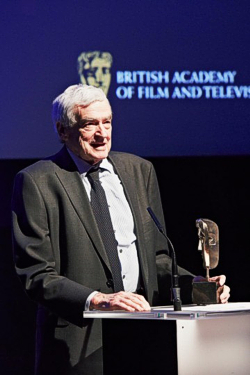 So I had to say no, and he said “I absolutely understand”. He said “I wish I could do the same”. A lot of people say that, you know they’d like to just relax and not do it, but you know, luckily I had a good career, so I’m not scrabbling around now, so I mean it’s nice.
So I had to say no, and he said “I absolutely understand”. He said “I wish I could do the same”. A lot of people say that, you know they’d like to just relax and not do it, but you know, luckily I had a good career, so I’m not scrabbling around now, so I mean it’s nice.
AV: And one thing that I find quite refreshing is that you’ve never “gone Hollywood”. You’ve stayed here, living where you grew up and worked, and you haven’t swapped it for the Beverly Hills glitz and glamour high life.
TR: No I haven’t, because I was very lucky when you think about it. I was offered these films, that took me to America, so I had that life, but I still had my roots here where I could come back.
I always used to say like, especially on a film like Alien 3 which was a big headache to do, I’ve got an out clause. I can always say “That’s it, boys, I’ve had enough. I’m going home”. You can’t do that if you live there. You did these jobs, which were fantastic, I thoroughly enjoyed it and I loved it when I was doing these jobs in America.
When you think about it, you were travelled around first class, you were paid to be there, and your apartment was paid for. You had to do a lot of work, but you were well looked after. So you see it’s different – if you live there it would be harder, if you think about it. You’d have to run your own home and your own car, and all the rest of it. All these things were supplied because you were coming abroad.
No, I’ve never really wanted to live there, I never wanted to make my life in America. I thoroughly enjoyed going there, I’ve met lots of very interesting people and had a wonderful time. But that was then and now is now.
AV: So you never wanted to dabble in producing or – a path for many editors – to go into directing?
TR: Yes I did. I did once. A couple of times actually. I nearly got somewhere with it but just failed at the end. You know, just couldn’t get the right amount of people interested, but I thought, you know it’s like when I told you about editing, I felt I knew how to do that.
And I feel if I was ever given the opportunity on one of the things, then first I would, unlike Peter Hyams, I would hire the best cameraman I could afford, the best editor I could afford, production designer, what have you, so that at least I knew the people who were in important positions were going to give me the best quality. And then I could direct, I know what I want people to do.
And, yes, I tried a couple of times; one was a script called Off The Floor which I really wanted to do, about these waitresses in this crazy restaurant in Hollywood, and that would have been fun, and there was one other one, I can’t remember that now, but it was a huge galley that I was given, that I tried to get people interested in and it didn’t go. But I’ve had a good, happy career. No regrets at all!
AV: Terry, it’s been an absolute pleasure to have had the opportunity to reminisce with you about your remarkable work, and to talk about the so many wonderful people and films that you’ve been involved with. Thank-you so much!
TR: Very nice of you. You’re very welcome!
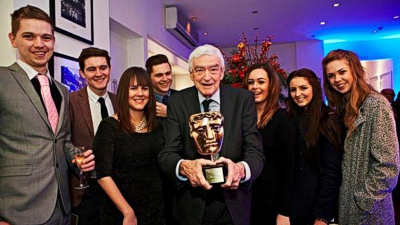
Since this interview, Terry has been awarded a lifetime achievement BAFTA, from the British Academy of Film and Television Arts in London, in December 2014. With friends and family – including his seven grandchildren – in attendance, the award was presented by long-time friend and colleague Ray Merrin, a prolific sound designer who lists Watership Down and Harry Potter amongst his credits. Video tributes were played from Sir Ridley Scott, Barbra Streisand and Lord David Puttnam, proving that Terry is still an admired, much loved and well respected figure in the business.
Big Sky Video’s Region 4 Australian PAL 25th Anniversary Edition is
now out of print, but well worth seeking out via eBay. Features:• Feature commentary with director Martin Rosen
• Theatrical trailer
• Production stills and liner notes galleries
• Reversible (original poster) sleeve packagingSee Big Sky’s website listing here
Warner Home Video’s Deluxe Edition DVD included newly
produced extras to mark the film’s 30th anniversary. Features:• A conversation with filmmakers Martin Rosen and Terry Rawlings
• Defining A Style featurette
• Four storyboard scene comparisons[AMZ]B001BSBC0C[/AMZ]
Universal’s Region B UK Blu-ray Disc carries over the same
extras as the Warner DVD, with new HD transfer. Features:• A conversation with filmmakers Martin Rosen and Terry Rawlings
• Defining A Style featurette
• Four storyboard scene comparisons[AMZ]B00EF44B52[/AMZ]
The Criterion Collection’s new Region A Blu-ray Disc features:
• Picture-in-picture feature storyboard comparison
• New interview with director Martin Rosen
• Theatrical trailer
• Defining A Style featurette
• Appreciation of the film by Guillermo del Toro
• Packaged liner notes by Gerard Jones[AMZ]B00PULRC0U[/AMZ]


